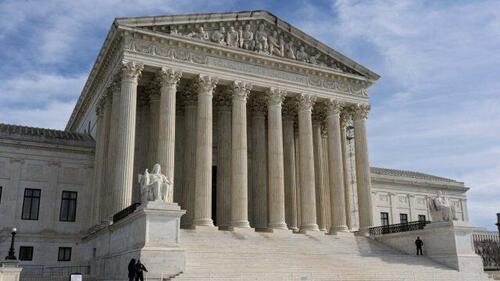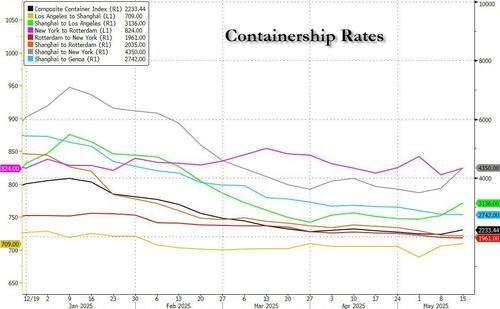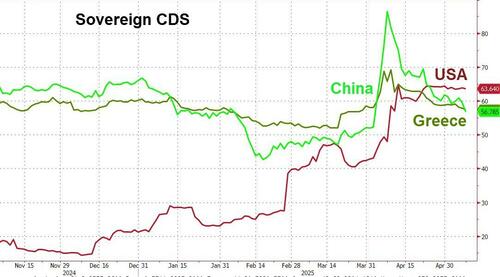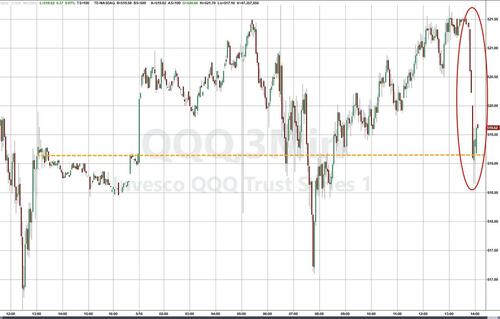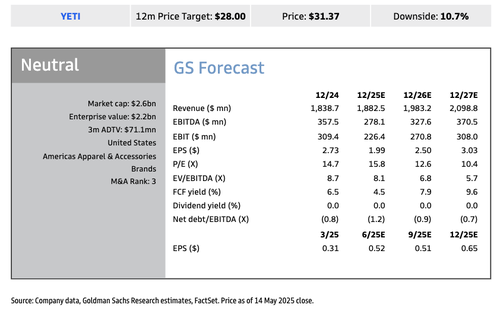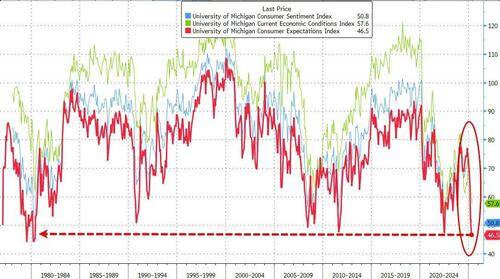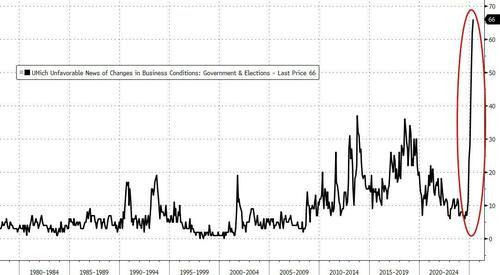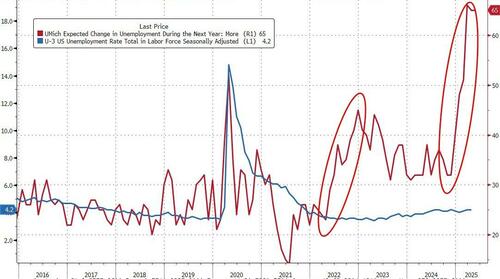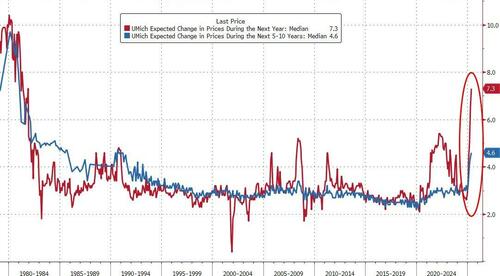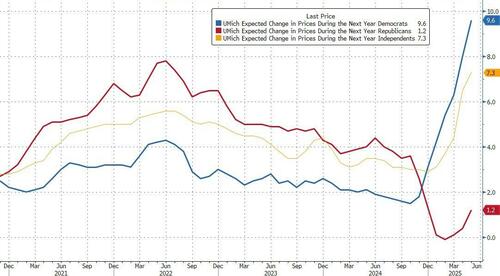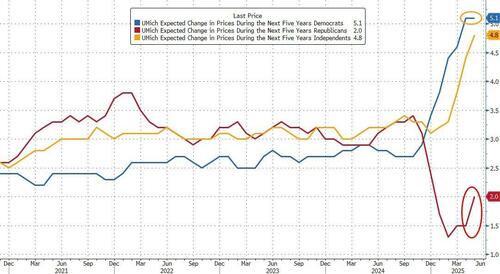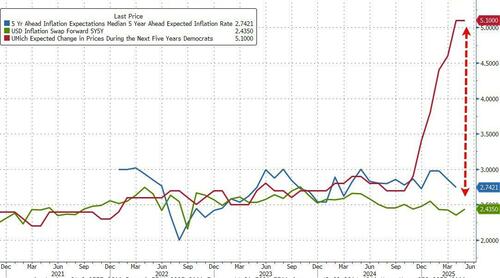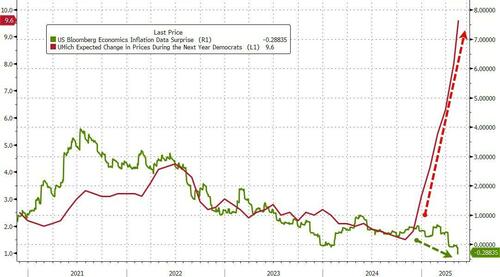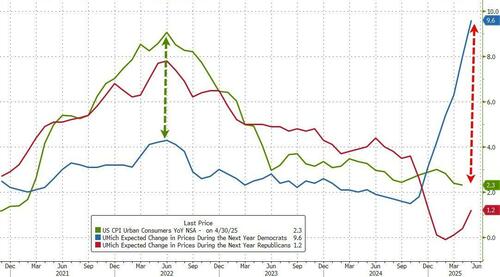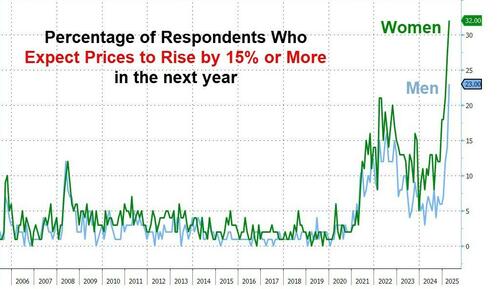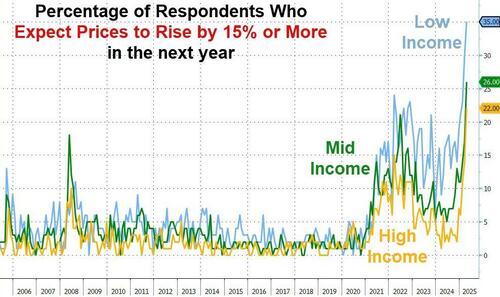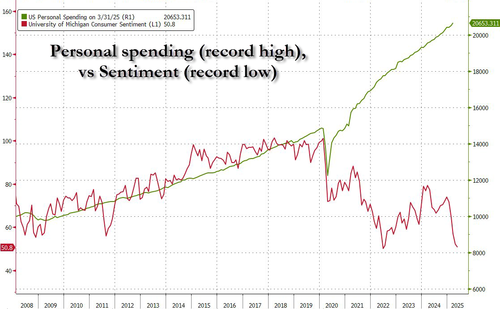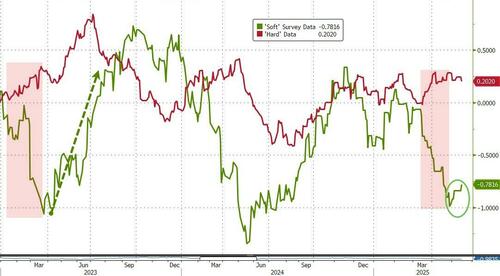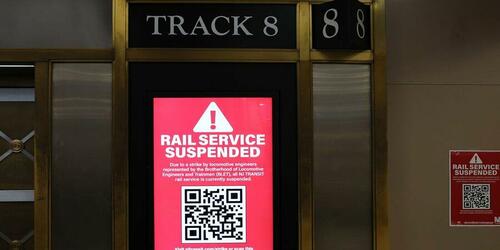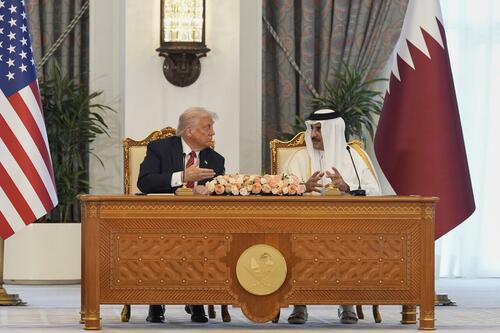For many people today, practical atheism is the normal rule of life...If this attitude becomes a general existential position, then freedom no longer has any standards, then everyting is possible and permissible.
Distinction Matter - Subscribed Feeds
-
Site: Zero HedgeWill Nuclear Fusion Soon Be The "Norm?"Tyler Durden Fri, 05/16/2025 - 19:05
Authored by Duggan Flanakin via RealClearEnergy,
The dream of humanity to imitate the forces that created their habitat has been alive for at least as far back as the time when humans with a single language decided to build a city with a tower that reached the heavens. For such a people, “nothing they plan will be impossible to them,” it is recorded.
For at least the same time frame, humanity has sought comfort through technology. While primitive heat producers like coal and wood are still used today, the discovery that petroleum, natural gas, and even moving water could generate a newly discovered phenomenon known as “electricity” transformed the industrial revolution into the modern era.
Not until the 1930s did German scientists build on Enrico Fermi’s discovery that neutrons could split atoms to recognize that splitting atoms would release significant energy – energy that could be used for both bombs and electricity generation. By the 1950s, scientists began building nuclear fission-based power plants that today provide about a tenth of the world’s electricity.
Scientists and engineers also began to envision the potential of nuclear fusion -- the reaction of light atomic nuclei powers the sun and the stars. Since that time, they have worked feverishly, but with little success, to replicate this energy-rich reaction using deuterium and tritium.
One group of scientists and engineers decided to try an alternative approach.
Founded in 1998, California-based TAE Technologies has been developing a reactor that runs on proton-boron aneutronic fusion – that is, a fusion reaction that fuses a hydrogen nucleus with non-radioactive boron-11 instead of fusing hydrogen isotopes of deuterium and tritium. Their goal is to develop commercial fusion power with the cleanest-possible environmental profile.
All efforts at fusion require chambers that can withstand temperatures of millions of degrees Celsius and immense pressure that are needed to fuse two isotopes together. To accomplish this requires huge amounts of energy – and until recently, more energy than the fusion produced.
Most fusion researchers, including those building the ITER project being built in France, rely on a donut-shaped tokamak reactor chamber, in which a stream of plasma must be held away from its walls by electromagnets for any energy to be produced. The tokamak design uses a toroidal magnetic field to contain the hydrogen plasma and keep it hot enough to ignite fusion.
Sadly, as with ITER, project costs have soared and timeframes have fallen by the wayside despite occasional breakthroughs. Over decades, tokamak designs became gigantic, with huge superconducting magnetic coils to generate containment fields; they also had huge, complex electromagnetic heating systems.
Spurred by the failures of wind and solar to fully satisfy the desire for “clean energy,” governments and private investors began investing heavily into fission and fusion projects. Oak Ridge, Tennessee, has tapped into a $60 million state fund intended to bolster both fission and fusion energy in atomic energy’s American birthplace.
New research at the University of Texas, in conjunction with Los Alamos National Laboratory and Type One Energy Group, uses symmetry theory to help engineers design magnetic confinement systems to reduce plasma leakage from tokamak magnetic fields.
The old method used for a stellarator reactor relied on perturbation theory. The new method, which relies on symmetry theory, is a game changer. It can also be used to identify holes in the tokamak magnetic field through which runaway electrons push through their surrounding walls and greatly reduce energy output.
The TAE Technology reactor is entirely different than any of the tokamak or stellarator fusion chambers. In 2017, the company introduced its fifth-generation reactor, named Norman, which was designed to keep plasma stable at 30 million C. Five years later the machine had proven capable of sustaining stable plasma at more than 75 million C.
That success enabled TAE to secure sufficient funding for its sixth-generation Copernicus reactor and to envision the birth of its commercial-ready Da Vinci reactor. But in between, TAE developed Norm.
Norm uses a different type of fusion reaction and a new reactor design that exclusively produces plasma using neutral beam injections. The TAE design dumps the toroidal field in favor of a linear magnetic field that is based on the “field-reversed configuration” (FRC) principle, a simpler, more efficient way to build a commercial reactor.
Instead of massive magnetic coils, FRC makes the plasma produce its own magnetic containment field. The process involves accelerating high-energy hydrogen ions and giving them a neutral charge, then injecting them as a beam into the plasma. That causes the beams to be re-ionized as the collision energy heats the plasma to set up internal toroidal currents.
Norm’s neutral beam injection system has cut the size, complexity, and cost, compared to that of Norman, by up to 50%. But not only is an FRC reactor smaller and less expensive to manufacture and operate, says TAE, it can also produce up to 100 times more fusion power output than a tokamak -- based on the same magnetic field strength and plasma volume.
The FRC reactor also can run on proton-boron aneutronic fusion, which, instead of producing a neutron it produces three alpha particles plus a lot of energy. The fewer neutrons also do less damage to the reactor; the energy being released as charged particles is easier to harness. Less shielding is required, and, perhaps best of all, boron-11 is relatively abundant and not radioactive.
So, while “Norm” may not be the final step in developing commercial fusion energy, TAE’s hope is that fusion energy will the “norm” as early as the mid-1930s. FRC technology has materially de-risked Copernicus, according to TAE CEO Michi Binderbauer.
If Norm is as advertised, it will accelerate the pathway to commercial hydrogen-boron fusion – a safe, clean, and virtually limitless energy source.
But is humanity ready for free energy to be the “norm?”
Duggan Flanakin is a senior policy analyst at the Committee For A Constructive Tomorrow who writes on a wide variety of public policy issues.
-
Site: Zero HedgeTrump Fumes After Supreme Court Rules Venezuelan Illegals Can't Be Deported (For Now)Tyler Durden Fri, 05/16/2025 - 18:51
Update (1715ET): President Trump took to TruthSocial to issue his brief but terse statement:
"THE SUPREME COURT WON’T ALLOW US TO GET CRIMINALS OUT OF OUR COUNTRY!"
* * *
The Supreme Court ruled this afternoon to keep in place its block on President Trump's deportations of (alleged) Venezuelan gang members under a 1798 law historically used only in wartime after their ACLU lawyers said the government was set to remove the men without judicial review in violation of a prior order by the justices.
The Supreme Court has previously issued two orders stemming from those cases.
Justices agreed that the president could rely on the centuries-old wartime law to remove immigrants from the country - provided they first have an opportunity to challenge those claims in court - and then temporarily blocked the government from deporting another group of Venezuelans in Texas while their lawyers scrambled to challenge the allegations against them.
In his proclamation invoking the Alien Enemies Act, Trump stated that “all Venezuelan citizens 14 years of age or older who are members of [Tren de Aragua], are within the United States, and are not actually naturalized or lawful permanent residents of the United States are liable to be apprehended, restrained, secured, and removed as Alien Enemies.”
The 7-2 decision clarified an unusual order issued by the justices in the early hours of April 19 that hit pause on any government plans to deport people held in northern Texas.
The Supreme Court delivered a blow to the Trump Administration in blocking deportations under the Alien Enemies Act. However, the Court only did so based on the lack of notice (24 hours) afforded by the Administration. It did not rule on the legality of the use of the AEA...
— Jonathan Turley (@JonathanTurley) May 16, 2025Over the dissents of conservative Justices Clarence Thomas and Samuel Alito, the justices in the latest unsigned decision slammed the Trump admin for only giving the detainees 24 hours to launch legal challenges.
“Notice roughly 24 hours before removal, devoid of information about how to exercise due process rights to contest that removal, surely does not pass muster,” the court wrote in its unsigned opinion.
“But it is not optimal for this Court, far removed from the circumstances on the ground, to determine in the first instance the precise process necessary to satisfy the Constitution in this case. We remand the case to the Fifth Circuit for that purpose,” the opinion continued.
However, as The Hill reports, the justices declined the ACLU’s additional request to leapfrog the lower courts to immediately take up the issue of whether President Trump can invoke the rarely used law outside of wartime.
Instead, the case will return to the lower courts alongside a handful of other challenges being brought by the civil rights group around the country.
So it’s legal for a president to ship millions of illegal aliens into our country but it’s illegal to send them home?
— Rep. Mike Collins (@RepMikeCollins) May 16, 2025
The system is broken. The Supreme Court failed us.
Whose country is this anymore?The issue could ultimately return to the justices, who directed the lower courts to act “expeditiously.”
Now, we all anxiously await President Trump's response to this decision...
-
Site: Zero HedgeBees Are Behind Our Food And Natural Medicines - And They're DisappearingTyler Durden Fri, 05/16/2025 - 18:40
Authored by Emma Suttie via The Epoch Times (emphasis ours),
Bees are dying—and at an alarming rate.
Between 2023 and 2024, US beekeepers lost an estimated 55.1 percent of their colonies—the worst loss in more than a decade and nearly 15 percent higher than the previous 13-year average.
 Lisa Schaetzle/Getty Images
Lisa Schaetzle/Getty Images
Bees pollinate three-quarters of the fruits, vegetables, and nuts we eat, and many of us rely on bee products for their nutrition and health-promoting gifts. If bees vanish, it’s scary to think of all we stand to lose. And some say that if the bees go, we go too.
Jeff Pettis, president of Apimondia—The International Federation of Beekeepers’ Associations—sums up the health benefits that bees offer humans in one word: huge.
Although two-thirds of our diet comes from carbohydrates—crops like rice, wheat, and corn—which are pollinated by wind rather than insects, many other important foods require bees.
“So we’re not going to starve if we don’t have bees. But literally, everything you can think of that’s nutritious—fruits, nuts, and vegetables—all of those are, we'll call it, animal-pollinated. The vast majority of those are pollinated by honey bees or other wild bees,” he told The Epoch Times.
Bees Pollinate
Ryan Burris is a third-generation beekeeper and the president of the California State Beekeepers Association. He points out that many people don’t realize how many fruits and vegetables we eat depend on bees for pollination.
“The biggest one, obviously, for beekeepers, is almonds. And then you have things like blueberries, watermelons, and stuff you don’t think about, like onions and carrots—all require pollination. There’s an estimated 100 crops that require pollination,” he told the Epoch Times.
Twenty thousand species of bees grace our planet, and 4000 species are native to the United States. Bees are some of our most well-known and beloved pollinators. One in every three bites of food you eat depends on pollinators to produce, and bees pollinate one in every four bites.
Beyond their critical role as pollinators, bees also gift us powerful products like honey, bee pollen, propolis, and royal jelly—each packed with nutritional and medicinal benefits.
Honey
The Ancient Egyptians may have been the world’s first beekeepers. They crafted clay hives and transported them on rafts along the Nile, allowing bees to pollinate whatever flowers were in season. Bees were deeply revered, and honey was considered sacred.
Throughout history, honey has played many roles—it was used in religious rituals, medicine, currency, and offerings to the gods. When archaeologists uncovered King Tutankhamun’s tomb, they found a sealed jar of honey more than 2,000 years old. Because honey doesn’t spoil, it was still safe to eat.
Honey offers a treasure trove of healing properties. It soothes a cough, benefits digestion and oral health, treats constipation and diarrhea, protects the heart, and has anticancer properties—in addition to being antibacterial, anti-inflammatory, antifungal, and a powerful antioxidant.
Jana Schmidt is a board-certified naturopathic doctor and master herbalist who keeps bees. She says not all honey is created equal, and knowing where your honey comes from is crucial, as many store-bought varieties are synthetically made or artificial. If you want the good stuff, go for raw, local honey—ideally straight from a beekeeper.
“Darker varieties have higher antioxidants than the lighter varieties,” she noted, saying bees make the darker types in the winter months when it’s cold, and they need more nutrition—which is passed to us when we eat it.
She says that honey added to tea before bed can help you sleep—something she did for her children when they were little.
“It helps regulate your sleep, but it also protects the teeth from the bacteria that causes cavities, which seems crazy because it’s sweet. You think, oh, that’s going to cause cavities, but actually, it protects the teeth,” she told The Epoch Times.
Studies have found that honey’s antibacterial properties fight harmful bacteria, such as Salmonella and E. coli. In addition, honey has been studied for its potential benefits against cancer—including breast, liver, and colorectal cancers, where it has shown cytotoxic effects on cancer cells, the ability to inhibit cancer cell growth, and prevent the formation of new blood vessels that tumors need to grow.
Raw honey is a potential source of Clostridium botulinum spores, which can cause botulism—especially in babies. Therefore, it’s generally recommended that infants under one year of age should not be fed raw honey.
Bees are prolific producers of a diverse array of products with numerous potential health benefits, according to experts.
Bee Pollen
Honeybees collect pollen from flowers and mix it with their saliva, which contains special enzymes. They then store it in comb cells inside their hives. Once the pollen is stored and processed in the hive, it is called beebread, or ambrosia—a vital food for the bees—containing proteins, fats, vitamins, and minerals they need. When beebread is stored, it undergoes a natural fermentation process, which preserves it and makes its nutrients easier to absorb.
 Bee pollen. hanif66/Shutterstock
Bee pollen. hanif66/Shutterstock
“To me, it’s God’s perfect multivitamin because it has every vitamin and mineral known for human nutrition. It has approximately 96 different nutrients and bioavailable energy. It’s antibacterial, antifungal, antiviral, and the most digestible protein per ounce than anything else out there,” Schmidt said.
Bee pollen offers a source of sustained energy throughout the day and not a spike like you might get from sugar or caffeine, she said.
“I don’t drink coffee or anything like that. I just take my bee pollen in the morning, and I’m good to go,” she beamed.
There is growing scientific interest in bee pollen, particularly because of its antimicrobial properties, which can fight a wide variety of pathogens, including bacteria and fungi. This ability is notable because some bacteria are becoming resistant to antibiotics. Bee pollen (beebread) seems able to fight microbes without creating resistance, which some scientists believe is because it contains several different natural compounds that work synergistically. Bee pollen also supports the body’s good bacteria, benefiting healthy gut microbes—behaving like a prebiotic.
Schmidt adds that as a natural fertility specialist, bee pollen is her number one fertility supplement.
“If you think about it, it’s the fertility for the plants. Why wouldn’t it be fertility for us, too? So sometimes that’s all it takes. The couple start taking bee pollen, and bam, they’re fertile. So that’s been pretty fun to be a part of.”
Studies have found that bee pollen has other wide-ranging medicinal benefits to humans, including:
- Benefiting metabolic syndrome disorders
- Preventing obesity
- Combating liver disorders
- Cardioprotective effects
- Lowering uric acid
- Detoxifying (based on animal studies)
- Regulating ovarian functions
- Alleviating allergic reactions
- Improving digestion and absorption
- Stimulating the immune system
- Improving cognitive dysfunction
“It takes bees working eight hours a day, two to four weeks, to gather one teaspoon of pollen, Schmidt said. They work so hard. They visit over 2 million flowers to get one teaspoon of pollen. It’s pretty amazing.”
Propolis
Propolis, also known as “bee glue,” is a resinous substance bees gather from different types of plants. Bees use it as a type of construction material for the hive. It seals holes and cracks, improves structural integrity, smooths the inner surface of the hive, maintains a constant internal temperature of 95 degrees Fahrenheit, and protects the hive from the elements, predators, and pathogens. Once hardened, it helps create an antiseptic internal environment.
 Bee propolis. Ihor Hvozdetskyi/Shutterstock
Bee propolis. Ihor Hvozdetskyi/Shutterstock
Schmidt offers a long list of propolis’s benefits, particularly to the brain. These include reducing inflammation in the brain and oxidative stress, helping reduce the toxic effects of methylmercury—a highly toxic form of mercury—and aluminum in the brain, increasing synaptic efficiency, and protecting against neurodegeneration and cognitive impairment.
She adds that it is a great prebiotic and excellent for gut health.
“Anytime there’s an infection, and you’re not quite sure what it is, I usually go to propolis—it just boosts your immune system like nothing else I’ve ever used,” she said.
Studies have revealed that this amazing substance has many applications for human health and has the following medicinal properties:
- Antioxidant
- Anti-inflammatory
- Antiulcer
- Anticancer
- Immunomodulatory
- Neuroprotective
- Anti-allergic
- Cardioprotective
- Antidiabetic
Studies in humans and animals have shown propolis to possess powerful healing properties beneficial in multiple acute and chronic diseases—from autoimmune diseases like Type 2 diabetes and rheumatoid arthritis to cardiovascular disease, cancer, and COVID-19.
In a 2021 randomized, controlled clinical trial, 124 hospitalized patients with COVID-19 were split into three groups. Two groups received Brazilian green propolis—400 or 800 milligrams daily—in addition to regular treatment—while the third group did not receive propolis.
The researchers found that patients who received propolis were released from the hospital five to six days sooner, and those who received 800 mg of daily propolis had less kidney damage associated with COVID-19. Thus, the study authors concluded that propolis is a safe and effective adjunct treatment for patients with COVID-19.
Royal Jelly
Humans have used royal jelly as a powerful medicine for millennia. It is extremely popular and highly regarded in Chinese medicine—in ancient times and today. Royal jelly is an overall tonic that promotes the robust development of bones, teeth, and the brain. It also helps boost fertility for women and soothe the symptoms of menopause.
 Royal jelly. Bin Zhu/Shutterstock
Royal jelly. Bin Zhu/Shutterstock
Royal jelly is a white milky substance secreted by worker bees to feed the queen bee larvae. Worker bee larvae get a different type—called worker jelly that contains fewer nutrients. According to one study, the higher quality royal jelly fed to the queen allows her to live a long life (up to five years) and lay 2,500 eggs daily. In comparison, worker bees only live about 45 days and, although female, do not reproduce.
Rich in proteins, carbohydrates, fats, vitamins, and minerals, royal jelly is a vital food source for bees. Today, humans use it as a dietary supplement, medicine, and ingredient in cosmetic and skincare products.
Studies have shown royal jelly to have the following medicinal properties:
- Antioxidant
- Anti-lipidemic
- Antiproliferative
- Antimicrobial
- Neuroprotective
- Anti-inflammatory
- Immunomodulatory
- Antiaging
- Estrogenic activities
Despite its medicinal benefits, Schmidt says that she does not recommend royal jelly because of how it is harvested, as it hurts the bees and the hive only to collect a tiny amount.
“I just don’t like the practice overall ... I feel like it takes it a step beyond what we should be doing to live well with the bees,” she said.
A 2023 study investigated the effect of royal jelly on liver enzymes and glycemic indices. The researchers found that royal jelly did not significantly affect adults’ glycemic profile or liver function. However, in trials with a longer duration of 8 or more weeks, and those conducted in “non-healthy” populations, there was a significant reduction in serum fasting blood glucose —a measurement of glucose in the blood after fasting. Higher fasting blood glucose levels are a characteristic sign of both prediabetes and Type 2 diabetes.
Why Bees Are Dying
We have all heard about the alarming decline in bee numbers in recent years.
Pettis says the reasons that bees are dying is such huge numbers are multifaceted and complex.
The first, he says, is that bees are losing their natural habitat. A significant reason for this is the rise of monoculture—when farmers plant only one kind of crop in their fields. This lack of diversity limits the flowers available for bees, making it harder for them to get all the nutrients they need to stay healthy and thrive.
“Roundup Ready crops, like corn, soybeans, all these—they create very sterile fields so there are no weeds—and a lot of those weeds are really good for bees,” he said.
Pettis says the second reason is pesticide exposure and the third is pests and diseases affecting bees. He says they all combine in different ways to affect bees and reduce their numbers, making beekeeping more challenging.
“We’ve had a number of exotic things come into the U.S.—two parasitic mites, and then the beetle from Africa, and now we have some invasive hornets coming in from Asia. It’s just one thing after another,” he said.
“It’s really hard to survive when you have all these stressors lining up, one right behind the other.”
Some readers may be wondering about colony collapse disorder.
“I was actually very involved in colony collapse disorder, which is now 20 years old, and we never came up with a single definitive thing. It was just a combination of things that were killing managed honeybees,” Pettis said.
Mites, particularly the varroa mite—which is aptly named Varroa destructor—have become an enormous challenge for beekeepers.
“The varroa mite—Varroa destructor—is the main killer of honey bees because they feed on the bee as it’s growing,” Burris said.
These tiny parasitic mites feed on bee fat and blood, which bees need for energy and a healthy immune system. They also spread viruses, particularly the deformed wing virus, which causes bees to be born with shriveled wings that will never fly.
Burris adds that federal and state regulators do not want honeybees on public lands as they fear they may hurt native pollinators, though he notes they don’t have evidence to support those concerns.
He says they’re arguing about food supply and demand problems without considering that native pollinators and honey bees have different feeding habits.
“They’re not taking into account the size of the honeybee, the size of a native pollinator, the size of their tongues, and how they extract nectar—how they obtain pollen,” he said.
Pesticides, which include insecticides and herbicides, are also detrimental to bees.
“Roundup and other weed killers that contain glyphosate are incredibly harmful to our bodies, but also the bees,” Schmidt said.
A relatively recent class of insecticides called neonicotinoids, or neonics, are the world’s most widely used insecticides and possibly one of the most deadly. They work by making every part of the treated plant toxic while poisoning the soil, surrounding water, and wildlife. They affect the bees’ nervous system, interfering with their ability to learn, remember, and navigate, meaning many exposed bees can’t find their way back to the hive and eventually die.
Since their introduction in the last two decades, neonicotinoids’ widespread use has made U.S. agriculture increasingly destructive to insect life. Neonicotinoids are responsible for 92 percent of this increase in danger to insects.
These deadly insecticides don’t just kill bees. Neonics are linked to losses of birds and fish and birth defects in white-tailed deer. Increasing evidence has also shown that neonics affect human health, especially children. One study found neonics in the urine of half of children 3 to 5 years old, and a 2020 Swiss study found neonics in every sample of plasma and spinal fluid of children receiving treatment for leukemia and non-Hodgkin lymphoma.
How We Can Help Bees
Thankfully, there are things we can all do to help bees and support these essential pollinators.
- Plant native flowers and trees, especially ones that bloom through summer, as bees need food from spring through fall.
- Buy local honey, and honey made 100 percent in the United States to support U.S. beekeepers.
- Avoid using insecticides or pesticides around your yard and use natural methods instead. Schmidt says using vinegar and water with a bit of salt kills weeds without harming anything else.
- Allow an area of your yard or garden to be overgrown or less cut back to provide food and nesting habitats for bees.
- Plant a bee garden with native flowers to attract bees and other pollinators.
- Create a bee watering station with filtered water using a deep plate with pebbles or marbles near flowering plants to give bees a safe place to drink.
- Create a bee house you can hang in your yard to give bees a place to live.
- Keep hives away from sources of wifi radiation and EMFs, which adversely affect bees.
- If you notice a swarm of bees on your property, contact a local beekeeping association, university agriculture department, or local beekeeper to collect them, not an exterminator.
- Encourage state legislators to support laws that support and protect bees.
- Spread awareness about bees and how we can support them.
Schmidt reveres the tiny pollinators that provide us with so much.
“You know, we use the term beekeeping, but I really feel like they keep us—like they know what to do, we just need to provide a nice habitat for them, and they do all the work—they just give and give.”
-
Site: RT - News
The offensive, dubbed Gideon’s Chariots, reportedly aims to “conquer” the entire Palestinian enclave
The Israel Defense Forces (IDF) has announced a new bombing campaign in Gaza aimed at defeating Hamas. The offensive comes after a ceasefire brokered by the US, Egypt, and Qatar expired in March.
“Over the past day, the IDF launched extensive attacks and mobilized forces to seize strategic areas in the Gaza Strip, as part of the opening moves of Operation Gideon’s Chariots and the expansion of the campaign in Gaza,” the military said in a statement on Friday evening.
The IDF reiterated its goals of securing the release of the remaining hostages and achieving “the defeat of Hamas.”
“IDF troops in the Southern Command will continue to operate to protect Israeli citizens and realize the goals of the war,” the Israeli army added.
According to the Times of Israel, the IDF aims to “conquer” Gaza, relocate the Palestinian population to the southern part of the enclave, and prevent “terror groups” from seizing humanitarian aid.
Al Jazeera reports that at least 115 Palestinians have been killed since dawn on Friday.
במהלך היממה האחרונה צה"ל החל בתקיפות נרחבות והניע כוחות לתפיסת שטחים שולטים בשטח רצועת עזה, זאת כחלק ממהלכי הפתיחה למבצע "מרכבות גדעון" והרחבת המערכה בעזה, להשגת כל מטרות המלחמה בעזה, לרבות שחרור החטופים והכרעת החמאס.
— צבא ההגנה לישראל (@idfonline) May 16, 2025
כוחות צה"ל בפיקוד הדרום ימשיכו לפעול בכדי להגן על אזרחי ישראל… pic.twitter.com/WtK8Iy6XyGThe ceasefire between Israel and Hamas broke down in March after the sides failed to agree on implementing the second phase of the truce.
Israel declared war on Hamas following a surprise attack by Palestinian militants on October 7, 2023, which killed around 1,200 people and resulted in over 200 hostages being taken. More than 53,000 Palestinians have been killed since the conflict began, and human rights organizations have accused Israel of genocide.
-
Site: LifeNews
Pro-Life Americans were sorely disappointed today when a House committee voted down the reconciliation bill that has language to defund the Planned Parenthood abortion business.
But House Majority Leader Steve Scalise says he thinks the fiscal policy issues that prompted a handful of pro-life Republican lawmakers to defeat the bill will be resolved and the House will pass the bill next week.
Scalise explained how this one big, beautiful bill will go to the Budget Committee on Sunday night before heading to the Rules Committee, and then the House Floor.
“So Sunday night, the Budget Committee will go back in,” he said in an interview with Fox News. “They’re going to meet.”
SUPPORT LIFENEWS! If you want to help fight abortion, please donate to LifeNews.com!
“Look, we’re talking to those members who voted no today. We’re going to work through it. There were some questions they had for the Trump Administration. We were working on getting them some of those questions answered,” Scalise explained.
“We’re going to get the bill passed. Then, ultimately, by next week, Tuesday, Wednesday, Thursday, on the House Floor, that bill will pass,” he added.” One big, beautiful bill will pass the House, and then it goes to the Senate, and they get to start their process. Although we’ve been keeping Senator Thune, Senator Crapo, all the other members of their leadership informed every step of the way, so they know what’s in this bill. Hopefully, they won’t have to start over from scratch.”
“[It could pass the Budget Committee by] Sunday night. It goes to Rules [Committee], goes to the floor – Tuesday, Wednesday, Thursday, somewhere in there. As fast as we can get it done. Let’s get it done,” the pro-life congressman added.
The bill failed in this morning’s vote in a 16-21 vote, with Reps. Ralph Norman (R-SC), Chip Roy (R-TX), Josh Brecheen (R-OK), Andrew Clyde (R-GA), and Lloyd Smucker (R-PA) joining all Democrats in voting down the bill.
The House Energy and Commerce Committee signed off on the bill earlier this week.
The good news for pro-life Americans is that the measure includes language to defund Planned Parenthood and Big Abortion. The abortion giant just announced that it killed over 420,000 babies in aboritons in its most recent year and mamade over $2 billion.
There were several amendments by pro-abortion Demcorats to take out the pro-life language in that committee. They all failed.
Nearly all committee Republicans voted against an amendment brought by pro-abortion Democrat Rep. Lizzie Fletcher to strike the language that would prohibit Planned Parenthood from receiving federal funds, even through Medicaid payments. Republican Reps. Mariannette Miller-Meeks and Gabe Evans did not vote on the amendment.
Susan B. Anthony Pro-Life America, a leading pro-life group, celebrated that vote.
“We congratulate Energy and Commerce Committee Chairman Brett Guthrie and House GOP allies for their hard work on a budget that serves moms, babies and taxpayers alike. SBA will proudly score in favor of this ‘one big beautiful bill’ that includes the vital priority of stopping forced funding of the abortion industry. To no one’s surprise, pro-abortion Democrats peddled lies and ran cover for abortion businesses like Planned Parenthood,” the group told LifeNews.
“Their taxpayer funding increased almost $100 million in one year, hitting $792.2 million in 2023, as health care like pap smears and breast exams plummeted – all while ending a record 402,230 babies’ lives,” it added. “We applaud pro-life congresswomen Harshbarger, Houchin, Fedorchak and Lee for speaking out during the debate to set the record straight and defeat a Democrat amendment that would have kept funneling money to Big Abortion. The Big Abortion industry is focused on profits, politics and lawfare, not providing quality services for low-income women in a safe environment. Patients are far better off going to community health centers that outnumber Planned Parenthood 15:1, where Medicaid recipients among others can get much more comprehensive care.”
Last week, a few Republicans in the House and Senate expressed their reservations about defunding Planned Parenthood within the budget bill. Asked about that, President Donald Trump expressed confidence that Republicans will resolve internal disagreements to advance legislation defunding Planned Parenthood.
“I don’t know yet. I have to see because you’re just telling me that for the first time, we’ll work something out,” Trump said in response.
The reconciliation process, which allows legislation to pass the Senate with a simple majority, offers Republicans a rare opportunity to strip federal funding from Planned Parenthood, the nation’s largest abortion business. Pro-life groups argue that taxpayer dollars, even if not directly funding abortions, indirectly subsidize Planned Parenthood’s operations, which include killing over 390,000 babies every year.
Pro-life advocates emphasize that community health centers, which outnumber Planned Parenthood clinics and provide comprehensive care without abortions, can absorb patients if funding is redirected.
House Speaker Mike Johnson, a staunch pro-life advocate, has signaled that defunding “big abortion” is a priority in the reconciliation bill, which also addresses Trump’s agenda on taxes, border security, and energy.
The Hyde Amendment already prohibits federal funds from directly paying for abortions, except in cases of rape, incest, or to save the mother’s life. However, Planned Parenthood receives approximately $700 million annually through Medicaid reimbursements and Title X grants. Pro-life leaders argue this funding frees up resources for Planned Parenthood’s abortion operations.
The reconciliation bill, which allows legislation to pass with a simple majority in both chambers, is seen as a critical opportunity to strip federal funding from Planned Parenthood, the nation’s largest abortion business. The abortion company received nearly $700 million in taxpayer funds in its 2022-2023 fiscal year, killing 392,715 babies in abortions, according to its annual report.
Meanwhile, Representative Mary Miller (R-Ill.) is waging a fierce campaign among her Republican colleagues to make defunding Planned Parenthood a non-negotiable piece of the final proposal.
Miller sent a passionate letter to Rep. Brett Guthrie (R-Ky.), chairman of the House Committee on Energy and Commerce, obtained by Breitbart News. In it, she urged Guthrie to “use every legislative option available to cease all federal funds going to Planned Parenthood,” exposing the organization’s deep entanglement in abortion and transgender treatments. “Abortions and transgender treatments have exploded in clinics across the country,” she wrote.
Citing the Charlotte Lozier Institute, Miller highlighted that “abortions made up 97.1% of Planned Parenthood’s pregnancy services from 2021-2022, performing nearly 400,000 abortions.” She also underscored the crisis in her home state, noting, “In 2023, my home state of Illinois performed 72,143 abortions, the most in our history since the state started reporting abortion totals in 1973.” Miller laid bare Planned Parenthood’s financial empire, stating, “Due to a lack of decisive Congressional action, Planned Parenthood has become a federally funded health network with private assets valued at $2.5 billion. Recent numbers show that Planned Parenthood received nearly $700 million in taxpayer revenue from 2022-2023.”
Her letter concluded with a call to action: “It is essential that we protect taxpayer dollars and stop funding this organization. President Trump has already issued an Executive Order that implements such a plan. Therefore, I urge you to do everything possible to ensure Planned Parenthood never receives another penny of taxpayer dollars.”
Speaking to Breitbart, Miller doubled down, declaring, “Planned Parenthood is a multi-billion-dollar abortion business that continues to receive millions in federal funding.” She praised Trump’s leadership, stating, “President Trump had it right when he issued an Executive Order to cut off taxpayer dollars from abortion providers like Planned Parenthood,” and insisted, “it’s time for Congress to make that policy permanent. I urge the Energy and Commerce Committee to ensure that not another dime of American tax dollars goes to this murder-for-profit organization.”

The post Steve Scalise: House Will Pass Bill to Defund Planned Parenthood Next Week appeared first on LifeNews.com.
-
Site: Real Jew News
Episode 80: White Culture And The Church
May 16 2025___________________________________
More Vids!
+BN Vids Archive! HERE!
___________________________________
Support The Brother Nathanael Foundation!
Br Nathanael Fnd Is Tax Exempt/EIN 27-2983459

Or Send Your Contribution To:
The Brother Nathanael Foundation, POB 547, Priest River, ID 83856
E-mail: brothernathanaelfoundation([at])yahoo[dot]com
Scroll Down For Comments
-
Site: non veni pacem
Have you noticed the “Republicans” can’t seem to cut a single dollar from the budget? The whole DOGE thing was smoke and mirrors. The current budget proposal would add another $10T to the debt over the next four years. Quite the Big Beautiful Bill, isn’t it? Good for Moody’s. Drop the bomb and see if it shakes any sense into them. -nvp
Moody’s downgrades United States credit rating, citing growth in government debt
Moody’s Ratings cut the United States’ sovereign credit rating down one notch to Aa1 from Aaa, the highest possible, citing the growing burden of financing the federal government’s budget deficit and the rising cost of rolling over existing debt amid high interest rates.
“This one-notch downgrade on our 21-notch rating scale reflects the increase over more than a decade in government debt and interest payment ratios to levels that are significantly higher than similarly rated sovereigns,” the rating agency said in a statement.
The decision to lower the United States credit profile would be expected, at the margin, to lift the yield that investors demand in order to buy U.S. Treasury debt to reflect more risk, and could dampen sentiment toward owning U.S. assets, including stocks. That said, all the major credit rating agencies continue to give the United States their second-highest available rating.
The yield on the benchmark 10-year Treasury note climbed 3 basis points in after-hours trading, trading at 4.48%. The iShares 20+ Year Treasury Bond ETF — a proxy for longer term debt prices — fell about 1% in after hours trading, while the SPDR S&P 500 ETF Trust that tracks the benchmark index for U.S. stocks dropped 0.4%.
Moody’s had been a holdout in keeping U.S. sovereign debt at the highest credit rating possible, and brings the 116-year-old agency into line with its rivals. Standard & Poor’s downgraded the U.S. to AA+ from AAA in August 2011, and Fitch Ratings also cut the U.S. rating to AA+ from AAA, in August 2023.
“Successive U.S. administrations and Congress have failed to agree on measures to reverse the trend of large annual fiscal deficits and growing interest costs,” Moody’s analysts said in a statement. “We do not believe that material multi-year reductions in mandatory spending and deficits will result from current fiscal proposals under consideration.”
-
Site: Zero HedgeHapag-Lloyd Sees 50% Surge In Container Bookings From China To The USTyler Durden Fri, 05/16/2025 - 18:15
Bt Stuart Chirls of Freightwaves
Hapag-Lloyd saw container bookings from China to the United States jump by 50% following the break in the tariff battle between the trading partners.
In comments during an earnings call, Chief Executive Rolf Habben Jansen explained that while recent bookings were down 20%-30%, there has been “a surge of over 50% in recent days,” though he noted the difficulty in predicting exact growth patterns.
“We expect capacity to return fairly swiftly. We have deployed smaller ships instead of doing blanks [canceled sailings], and we will reverse that soon. Within the next couple of weeks, we will deploy bigger ships again, and others may also increase capacity as the quarter progresses.”
The CEO also confirmed that upsizing vessels can be accomplished without significant disruption due to the simplified Gemini network with Maersk, and that it “won’t materially change overall costs,” with no current issues regarding mispositioning of containers.
Profit increased 45% to $469 million on revenue that was up 15% year over year to $5.3 billion in the first quarter, driven by a 9% increase in liner shipping volumes, marking the highest year-on-year growth in several years.
Liner shipping saw revenues of $5.2 billion on volume of 3.3 million twenty-foot equivalent units and an average freight rate of $1,480 per TEU, both of which were 9% higher y/y on strong demand. Earnings before interest, taxes, depreciation and amortization rose by 18%, to $1.1 billion, and earnings before interest and taxes were up by 25%, to $472 million.
The successful launch of the Gemini network saw schedule reliability of 90%, a remarkable figure in an industry that is usually around 65%.
The carrier faced operational challenges during the quarter, including ongoing rerouting of ships away from the Red Sea and around the Cape of Good Hope, as well as disruptions at various ports. These challenges increased operational costs and impacted efficiency but were effectively managed to minimize adverse effects on overall performance.
-
Site: Zero HedgeAmerica's Next Top Migrant: White House Denies Noem Backing DHS Citizenship Game ShowTyler Durden Fri, 05/16/2025 - 17:50
The White House has denied a report that DHS Secretary Kristi Noem is backing a proposal for a reality TV series that pits immigrants against each other for the grand prize: a fast-track to U.S. citizenship.
According to a 35-page pitch obtained by DailyMail.com, the Department of Homeland Security has been in contact with reality TV producer Rob Worsoff - known for Duck Dynasty and Millionaire Matchmaker - on a show called The American. The show would take a dozen pre-vetted immigrants on a cross-country journey aboard a train, competing in “cultural” challenges like assembling a Model T Ford in Detroit, rolling logs in Wisconsin, and digging clams in Maine.
Contestants would be greeted in New York City at Ellis Island by “a famous, naturalized American who was also born in another country,” the pitch reads, with names like Sofia Vergara, Ryan Reynolds, and Mila Kunis floated as possible hosts. Each contestant would receive a personalized baseball glove before hitting the rails aboard “The Citizen Ship.”
"Along the way, we will be reminded what it means to be American – through the eyes of the people who want it most," Worsoff’s pitch says.
There’d be elimination rounds, dramatic town halls, and viewer voting tallied by U.S. Citizenship and Immigration Services staff - yes, actual DHS employees, according to the proposal. The live finale would see the train stop in Washington, D.C., with the winner sworn in on Capitol Hill as Thunderbird jets roar overhead. "There won't be a dry eye within 10 miles!" the pitch promises.
Game show prizes? Think red-white-and-blue Americana: 1 million American Airlines points, a $10,000 Starbucks gift card, or a lifetime supply of 76 gasoline.
Tricia McLaughlin, DHS’s top spokesperson, confirmed the department had a call with Worsoff last week. "I think it's a good idea," she said. Though she claimed Noem “is yet to be briefed,” DailyMail.com reports Noem supports the show and wants to move forward.
DHS Distances
That said, DHS on Friday confirmed that it had received the pitch - but a spokesperson denied the Mail's report that Noem was involved. In a statement to the Epoch Times, DHS Assistan Secretary Tricia McLaughlin called the Mail's reporting "completely false," and denied claims that Noem had either "backed" or "reviewed" the plan.
"The Department of Homeland Security receives hundreds of television show pitches a year, ranging from documentaries surrounding ICE and CBP border operation to white collar investigations by HSI," she said, referring to Immigration and Customs Enforcement, Customs and Border Protection, and Homeland Security Investigations.
TV show proposals undergo “a thorough vetting process prior to denial or approval,” McLaughlin said, adding that the reality TV “show in question is in the very beginning stages of that vetting process and has not received approval or denial by staff.”
Separately, McLaughlin told news outlets that she had spoken with the producer of the proposed reality show. -Epoch Times
Worsoff, a Canadian-born producer, said, “I’m not affiliated with any political ideology. As an immigrant myself, I am merely trying to make a show that celebrates the immigration process.”
The proposal also includes themed challenges like mining for gold in San Francisco, launching rockets in Cape Canaveral, and rafting down the Arkansas River. “We'll join in the laughter, tears, frustration, and joy – hearing their backstories – as we are reminded how amazing it is to be American,” the pitch reads.
Even the losers would have “a leg-up” in the naturalization process, the proposal notes.
For a secretary already accused of turning immigration enforcement into a branding exercise, The American is on-brand. Whether the public buys into her vision — or sees it as one more cringe photo op — remains to be seen.
Side note - the book 'Running Man' takes place in 2025...
-
Site: Zero HedgeUS Drug Overdose Deaths Fall Nearly 27 Percent To Lowest Level In 5 YearsTyler Durden Fri, 05/16/2025 - 17:25
Authored by Tom Ozimek via The Epoch Times (emphasis ours),
Drug overdose deaths in the United States dropped sharply in 2024, falling to their lowest level since before the pandemic, according to provisional data released on May 14 by the Centers for Disease Control and Prevention (CDC).
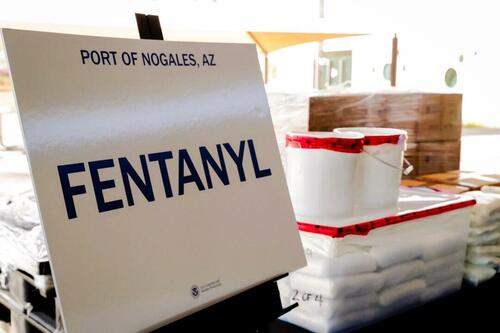 Packets of fentanyl and methamphetamine seized from a truck crossing into Arizona from Mexico are displayed during a news conference at the Port of Nogales, Ariz., on Jan. 31, 2019. U.S. Customs and Border Protection/Reuters
Packets of fentanyl and methamphetamine seized from a truck crossing into Arizona from Mexico are displayed during a news conference at the Port of Nogales, Ariz., on Jan. 31, 2019. U.S. Customs and Border Protection/Reuters
The report estimates that 80,391 people died of a drug overdose in 2024—a 26.9 percent decline from 110,037 in 2023, marking the largest one-year drop since the agency began collecting comparable data more than four decades ago.
It’s the second consecutive annual decrease after overdose deaths surged during and after the COVID-19 pandemic. Social isolation, disruptions to treatment, and other factors helped push fatalities to a peak of nearly 115,000 in 2023.
All but two states—Nevada and South Dakota—recorded declines last year, with especially steep drops in hard-hit areas such as West Virginia, which reported a 43.5 percent decrease. While the final figures may shift slightly as data are finalized, the CDC data indicate an unmistakable downward trend.
The decline was driven almost entirely by a reduction in fentanyl-related deaths. The synthetic opioid—at least 50 times more potent than heroin—was linked to more than 76,000 deaths in 2023, but that number dropped to just over 48,000 in 2024.
Experts have cited several possible reasons for the downturn, including expanded access to the overdose reversal drug naloxone—sold as Narcan—which became available over the counter in 2023. It is now carried by most first responders. Increased use of addiction treatment medications and changes in drug supply patterns may also be factors.
Despite the improvement, the new data revealed troubling increases in deaths tied to stimulants such as methamphetamine and cocaine.
Fatalities involving meth rose from 29,456 to 37,096, while cocaine-related deaths jumped by about 8,000, reaching 30,833. Since overdose statistics often overlap—many deaths involve multiple substances—it remains unclear how many of these fatalities involved stimulants alone.
The Trump administration has intensified efforts to choke off the international supply chain responsible for flooding the country with synthetic opioids.
While most fentanyl consumed in the United States is manufactured in Mexico, the raw chemicals used to make it overwhelmingly come from China. A Pulitzer Prize-winning investigation by Reuters last year exposed how Chinese chemical suppliers and Mexican cartels continue to enable the epidemic.
Reporters were able to legally purchase all the chemicals and equipment needed to produce $3 million worth of fentanyl for just $3,600—exploiting a since-closed customs loophole known as the “de minimis” rule. That exemption had allowed goods valued at or under $800 to be imported duty-free.
A recent report from the House Select Committee on the Chinese Communist Party (CCP) found that Beijing is not only failing to stop the export of fentanyl precursors but is actively encouraging it.
According to the report, the Chinese regime offers tax rebates and state subsidies to companies producing illegal synthetic opioid components, fueling what lawmakers call a deliberate assault on the United States.
“Through its actions, as our report has revealed, the Chinese Communist Party is telling us that it wants more fentanyl entering our country,” Select Committee Chair Mike Gallagher (R-Wis.) said during an April 16, 2024, hearing. “It wants the chaos and devastation that has resulted from this epidemic. And yes, that means more dead Americans.”
In response, the Trump administration in February announced a new round of targeted tariffs on China’s synthetic drug supply chain, aiming to disrupt the production and export of fentanyl precursors.
-
Site: Zero HedgeMoody's Downgrades USA Credit Rating From AaaTyler Durden Fri, 05/16/2025 - 17:05
Earlier this week, we noted that short-dated USA sovereign CDS were trading wider than China and Greece as trade policy uncertainty and the debt ceiling 'X-date' loomed...
...well, it appears Moody's Rating Agency noted it too... because they just downgraded the Government of United States of America's (US) long-term issuer and senior unsecured ratings to Aa1 from Aaa and changed the outlook to stable from negative.
The one-notch cut comes more than a year after Moody’s changed its outlook on the US rating to negative, with Moody's joining Fitch Ratings and S&P Global Ratings in grading the world’s biggest economy below the top, triple-A position.
This one-notch downgrade on our 21-notch rating scale reflects the increase over more than a decade in government debt and interest payment ratios to levels that are significantly higher than similarly rated sovereigns.
Successive US administrations and Congress have failed to agree on measures to reverse the trend of large annual fiscal deficits and growing interest costs.
We do not believe that material multi-year reductions in mandatory spending and deficits will result from current fiscal proposals under consideration.
Over the next decade, we expect larger deficits as entitlement spending rises while government revenue remains broadly flat.
In turn, persistent, large fiscal deficits will drive the government's debt and interest burden higher.
The US' fiscal performance is likely to deteriorate relative to its own past and compared to other highly-rated sovereigns.
The stable outlook reflects balanced risks at Aa1.
The US retains exceptional credit strengths such as the size, resilience and dynamism of its economy and the role of the US dollar as global reserve currency. In addition, while recent months have been characterized by a degree of policy uncertainty, we expect that the US will continue its long history of very effective monetary policy led by an independent Federal Reserve.
The stable outlook also takes into account institutional features, including the constitutional separation of powers among the three branches of government that contributes to policy effectiveness over time and is relatively insensitive to events over a short period.
While these institutional arrangements can be tested at times, we expect them to remain strong and resilient.
The US' long-term local- and foreign-currency country ceilings remain at Aaa.
The Aaa local-currency ceiling reflects a small government footprint in the economy and extremely low risk of currency and balance of payment crises.
The foreign-currency ceiling at Aaa reflects the country's strong policy effectiveness and an open capital account, reducing transfer and convertibility risks.
RATIONALE FOR THE RATINGS DOWNGRADE TO Aa1
Over more than a decade, US federal debt has risen sharply due to continuous fiscal deficits.
During that time, federal spending has increased while tax cuts have reduced government revenues.
As deficits and debt have grown, and interest rates have risen, interest payments on government debt have increased markedly.
Without adjustments to taxation and spending, we expect budget flexibility to remain limited, with mandatory spending, including interest expense, projected to rise to around 78% of total spending by 2035 from about 73% in 2024.
If the 2017 Tax Cuts and Jobs Act is extended, which is our base case, it will add around $4 trillion to the federal fiscal primary (excluding interest payments) deficit over the next decade.
As a result, we expect federal deficits to widen, reaching nearly 9% of GDP by 2035, up from 6.4% in 2024, driven mainly by increased interest payments on debt, rising entitlement spending, and relatively low revenue generation.
We anticipate that the federal debt burden will rise to about 134% of GDP by 2035, compared to 98% in 2024.
Despite high demand for US Treasury assets, higher Treasury yields since 2021 have contributed to a decline in debt affordability.
Federal interest payments are likely to absorb around 30% of revenue by 2035, up from about 18% in 2024 and 9% in 2021. The US general government interest burden, which takes into account federal, state and local debt, absorbed 12% of revenue in 2024, compared to 1.6% for Aaa-rated sovereigns.
While we recognize the US' significant economic and financial strengths, we believe these no longer fully counterbalance the decline in fiscal metrics.
Moody's couldn't help but take a shot at Trump's tariffs:
The US economy is unique among the sovereigns we rate.
It combines very large scale, high average incomes, strong growth potential and a track-record of innovation that supports productivity and GDP growth.
While GDP growth is likely to slow in the short term as the economy adjusts to higher tariffs, we do not expect that the US' long-term growth will be significantly affected.
But they did say something positive...
Despite reserve diversification by central banks globally over the past twenty years, we expect the US dollar to remain the dominant global reserve currency for the foreseeable future.
...
Moreover, the resilience of the US sovereign rating to shocks is supported by strong monetary and macroeconomic policy institutions.
Although policy has been less predictable in recent months, relative to what has typically been the case in the US and other highly-rated sovereigns, we expect that monetary and macroeconomic policy effectiveness will remain very strong, preserving macroeconomic and financial stability through business cycles.
The timing is exceptional, as Republicans try to get Trump's 'big beautiful bill' out of committee... and as everyone knows, there's no such thing as a coincidence in Washington.
US equity markets are trading down after hours on the news:
Trump's gonna be pissed!!
-
Site: Zero HedgeTrump Tax Bill Fails To Advance As Conservative Holdouts Double Down On 'No'Tyler Durden Fri, 05/16/2025 - 17:00
Update (1210ET): The House Budget Committee has voted down the reconciliation bill by a vote of 16-21 - with GOP Reps. Clyde, Roy, Breechen, Norman and Smucker (who flipped his vote) all voting "no".
 Speaker Mike Johnson (L), President Donald Trump, Rep. Chip Roy (R-TX)
Speaker Mike Johnson (L), President Donald Trump, Rep. Chip Roy (R-TX)
"This bill falls profoundly short. It does not do what we say it does with respect to deficits," said Rep. Chip Roy.
Rep. Andrew Clyde (R-GA) said "I am unable to support this package in its current form, but I look forward to strengthening this bill to ensure that it does pass, so that we full all of our America First promises to the American people."
Whilst Ralph Norman (R-SC) said "Sadly, I’m a hard no until we get this ironed out."
According to Punchbowl's Jake Sherman, Smucker likely flipped "no" to preserve the ability to reconsider the bill at a later time.
House Budget Committee Chairman Rep. Jody Arrington (R-TX) said after the vote "I do not anticipate us coming back today."
* * *
A fiery intra-party fight exploded on Capitol Hill Friday as House Republicans clashed over President Donald Trump's mammoth "One Big Beautiful Bill," with Trump himself jumping into the fray to torch conservative holdouts as attention-hungry "grandstanders."
As the House Budget Committee met to advance the 1,116-plus-page megabill - packed with Trump’s signature proposals on taxes, Medicaid, and immigration - chaos broke out behind the scenes, and in front of the cameras, as hardline conservatives threatened to blow up the entire process.
"Republicans MUST UNITE behind ‘THE ONE, BIG BEAUTIFUL BILL!’" Trump posted on Truth Social. "We don’t need ‘GRANDSTANDERS’ in the Republican Party. STOP TALKING, AND GET IT DONE!"
The scorched-earth post came as the House Budget Committee met down to mark up the massive reconciliation bill, which bundles together much of Trump’s second-term policy wishlist: tax cuts, welfare reform, immigration crackdowns, and the death of Biden’s green energy subsidies.
But what was supposed to be a legislative victory lap turned into a high-stakes hostage crisis, with Speaker Mike Johnson (R-LA) caught between warring GOP factions, each demanding major changes and threatening to sink the bill if they don’t get their way.
Conservatives on the committee - Reps. Chip Roy, Ralph Norman, Andrew Clyde, and Josh Brecheen - signaled they were ready to vote against the bill unless major changes were made. Their demands include a faster phase-in of Medicaid work requirements, a ban on undocumented immigrants receiving federal benefits, and immediate termination of Inflation Reduction Act clean energy provisions.
"If they don’t [change it], I’m gonna vote no. We’ll kill it," Norman warned Thursday. "I don’t want to. But I will."
The vote is ongoing, with Roy and Norman both using their time during committee to voice their opposition, CNN's Sarah Farris reports.
Ok we're now at TWO no votes: Roy and Norman both used their time during committee to say they're opposed
— Sarah Ferris (@sarahnferris) May 16, 2025
Both Brecheen and Clyde supposed to speak now but neither are there to speak. If either opposes, it's done for today. https://t.co/pDIwEaw6zTThe tension spilled into full view Friday morning when Norman, Roy, and Clyde abruptly left the committee room moments before the markup was scheduled to begin, prompting immediate speculation they were staging a walkout. All three returned shortly afterward, saying little, but still signaling deep frustration.
Norman told reporters the situation was “very disappointing," adding “I hope they recess.”
Rep. Roy: “I'm not going home this weekend. I'm staying here all weekend and we're going to get this damn thing done but the right way.
— Rep. Chip Roy Press Office (@RepChipRoy) May 16, 2025
I'm not going to vote for a bad bill. I didn't come here to raise debt. I didn't come here to increase deficits. I didn't come here to cement… pic.twitter.com/0jcqR9cgz3Johnson, for his part, is trying to keep the circus moving. He has pledged to make some concessions - such as speeding up work requirement timelines and possibly harmonizing those across both Medicaid and SNAP - but every adjustment risks triggering a backlash from the other side of the GOP spectrum.
"If you push too hard on one side, the other side bulges out," opines Punchbowl News. "That’s exactly what’s happening here."
Very SALTy
Moderates are already howling over cuts to safety net programs and demanding changes of their own. Blue-state Republicans want the SALT deduction cap raised above the $30,000 ceiling currently in the bill. Rep. Don Bacon (R-NE) wants to remove language that would block legal refugees from getting food aid. And Florida Republicans are furious over a provision that clamps down on provider taxes - a method states use to draw more federal Medicaid dollars.
The markup itself became a theater of dysfunction - with Rep. Blake Moore (R-UT) joking about the fact that he went viral earlier this week for falling asleep during a late-night hearing. “I also appreciate that you schedule the markup during daylight hours,” he said. Chair Jodey Arrington (R-TX) fired back: “Some of the staff decided to chip in and equip your chair with an electric shocking mechanism... I hope that is also a bipartisan proposal.”
Unbelievable. Rep. Blake Moore falls asleep during a committee meeting and had to be woken up. pic.twitter.com/xSKPKkP628
— Thomas Sowell Quotes (@ThomasSowell) May 14, 2025But behind the laughs, the reality is grim. With Rep. Brandon Gill (R-TX) absent for the birth of his child, Johnson can’t afford even a single Republican defection if he wants the bill to make it out of committee.
Majority Leader Steve Scalise (R-LA) tried to downplay the drama, telling reporters, “The goal is to get it out of the committee today... because failure is not an option.”
How did we get here? These speed bumps aren’t surprising. This is a gigantic legislative grab-bag with lots of disparate priorities. We get that. It reminds us a bit of Build Back Better – which failed and led to the IRA, for what it’s worth. -Punchbowl News
Indeed, Speaker Johnson has tried to do what many before him could not: push through a comprehensive, everything-at-once bill that pleases both fire-breathing conservatives and centrist pragmatists. But by skipping the usual slow walk through committee education and member negotiations, he may have created a legislative trap for himself.
And of course, after all of this - the bill still has to get through the Senate...
Stay tuned for updates...
-
Site: LifeNews
A post-abortion woman named “Leena” tells the following story:
I’m now 21 years old, and I had my abortion 2 months ago… I was about six weeks pregnant.
It was, and has been, the hardest thing I’ve ever gone through in my life. I didn’t want to do it… I just felt stuck, like I had no choice.
My boyfriend and I had been together for only about six months, and were living together. We were not having protected sex, so my pregnancy was bound to happen.
He knew, before I did, that I was pregnant. He told me for a couple of weeks, and I kept saying, “Nah, nah… my period isn’t due yet.” But I was wrong.
One Saturday, I went to the grocery store to pick up my pregnancy test, and secretly took it that day. When the pink line came up fast, I was completely shocked. I walked out of the bathroom, not being able to speak, and just motioned for my boyfriend to go look in the bathroom.
SUPPORT LIFENEWS! If you want to help fight abortion, please donate to LifeNews.com!
The first thing he said to me was, “His name is Alex.” I was in more shock than he was, almost crying. But in the back of my mind, I was so happy. I’d always wanted a baby. I’d always imagined myself pregnant. It was finally happening for me.
For the next few days, my boyfriend told me he’d support me in whatever decision I made, whether it was to keep it, or have an abortion. I always said I didn’t know, but I secretly knew I wanted the baby. I figured, we’re both adults, we both work, and I’m planning on going back to school. To top it off, we’re in love and planned on getting married. I could do this.
But suddenly, he put down the line. I had to abort the baby. We weren’t ready financially or emotionally, he said. I didn’t want to. I cried, and cried.
I couldn’t function during the day. I made an appointment at the abortion clinic. I cried, and cried. The night before my appointment, I cried, and begged him to let me keep it.
There was nothing more I wanted than to keep this baby. I wish I would have been stronger. But I wasn’t, and I went through with it. The morning of my appointment was dark and rainy. We drove, and I was numb.
Once we got inside, I was shocked at how many women/girls were there. I cried from the time that they called my name, to the time I went under anesthesia.
It was the scariest thing I’ve ever been through. And I would never go through it again.
To this day, I hate seeing pregnant women. It can ruin my day to see one. Babies, even.
It breaks my heart to know that in February, I would have had my own. The worst thing is that I feel like I don’t have anyone to talk to.
My boyfriend and I are still together, but it’s not the same. He doesn’t understand what it feels like. God love him, he does try. But a man will never know what an abortion feels like.
The moment you find out your pregnant, you have an instant bond… something that no one will never be able to understand until they experience it themselves.
Did I do the right thing? I still ask myself that everyday. If I took away the emotions, I would say, “Yes.” I’m only 21 years old, and I still have my entire life.
I’m trying to get through school, and work full time to get through it. My boyfriend and I are broke. We are scraping by, with rent every month. Financially, we could not support a baby right now.
But, with the emotions? Yes, I wish I did have that baby. That was my child and, even without any money at all, that would be the love of my life… So its hard to say. Its over now, and I have to get on with my life.
I will always love that little boy with all of my heart and, someday, I’ll have him again. Till then, I just have to learn to be strong.
LifeNews Note: Sarah Terzo covered the abortion issue for over 13 years as a professional journalist. In this capacity, she has written nearly a thousand articles about abortion and read over 850 books on the topic. She has been researching and writing about abortion since attending The College of New Jersey (class of 1997) where she minored in Women’s Studies. This article originally appeared on Sarah Terzo’s Substack. You can read more of her articles here.

The post I Wanted to Keep My Baby, But My Boyfriend Pressured Me Into Abortion appeared first on LifeNews.com.
-
Site: Catholic ConclaveCardinal Bishop of Algiers, modernists to the rescue?During the days before the Conclave, in the normal and predictable whirlwind of voices and interviews that these occasions arouse, we had missed the interview given to the daily newspaper of the CEI "Avvenire", on April 29, 2025 (here), by His Eminence Cardinal Jean Paul Vesco, O.P., Cardinal Archbishop of AlgiersThe interview, as you will Catholic Conclavehttp://www.blogger.com/profile/06227218883606585321noreply@blogger.com0
-
Site: Catholic ConclaveAs one of three Papal electors from Germany, Cardinal Reinhard Marx participated in the conclave. In an interview, he now reflected on his first meeting with Cardinal Prevost and commented on the Vatican's financial situation.From the perspective of Munich Cardinal Reinhard Marx, there was only "very isolated" criticism of Pope Francis in the pre-conclave. Trying to pretend nothing is going Catholic Conclavehttp://www.blogger.com/profile/06227218883606585321noreply@blogger.com0
-
Site: LifeNews
Craig Paton reported for the Independent on May 13, 2025 on the Not Dead Yet UK rally outside Holyrood (Scottish parliament) as the Liam McArthur assisted suicide bill was debated and voted on.
The rally opposing assisted suicide featured actress Liz Carr and Scottish Labour MSP Pam Duncan-Glancy.
Paton reported that Silent Witness star Liz Carr told campaigners outside the Scottish Parliament that:
“I am so fed up of having to answer strangers’ questions, even in this day and age, who think that being us must be the worst thing imaginable,” she said to campaigners, which included a number of disabled people.
Click here to sign up for pro-life news alerts from LifeNews.com
“That having pain, having difficulty with everyday activities, must mean that it would be better if we were dead – that is not the case.”
Paton reported that Liz Carr qualifies for assisted suicide under the bill.
“But it also has a definition that I would qualify under, I would define myself as a disabled person, but actually the definition of having a progressive condition, I would come under that.
“So the potential for this to include far more than just those with true terminal illnesses … those as well with degenerative conditions, is what concerns so many of us and so many of the people that are here today.”
Scottish Labour MSP Pam Duncan-Glancy, who strongly opposes assisted suicide, also spoke at the rally. Paton reported:
Addressing the dozens of campaigners outside Holyrood, Ms Duncan-Glancy said: “If any of my colleagues are in any doubt whatsoever, if in doubt: don’t.”
She added: “The risk is too high.
“And so I hope that my colleagues will listen carefully to that and will not support this legislation this afternoon.
“I know that I will, on behalf of all of you, go in there and fight for out lives.”
The bill passed at second reading by a vote of 70 to 56. The bill will now go to committee and a final vote is expected later this year.
LifeNews.com Note: Alex Schadenberg is the executive director of the Euthanasia Prevention Coalition and you can read his blog here.
The post Disabled People are Not “Better off Dead” appeared first on LifeNews.com.
-
Site: Fr. Z's BlogOn this Feast of St. John Nepomuceno the sun came into view at 5:47. We will lose sight of it again at 20:27. Our ears will not hear the un-run Ave Maria Bell at 20:45 in the Roman Curia, but … Read More →
-
Site: Catholic ConclaveIn the final year of his Pontificate, Pope Francis repeatedly pointed out the Vatican's dramatic deficit. While Cardinal Marx sees a clear need for action, he warns against panic-mongering – and explains what he believes is behind the headlineMunich Cardinal Reinhard Marx rejects reports of deep red figures in the Vatican. "I can't confirm that. The situation isn't as catastrophic as some claim,"Catholic Conclavehttp://www.blogger.com/profile/06227218883606585321noreply@blogger.com0
-
Site: RT - News
James Comey knew exactly what his recent cryptic social media post meant, the US president has claimed
US President Donald Trump has accused former FBI director James Comey of posting a since-deleted social media post calling for his “assassination.”
Comey posted a photograph of seashells spelling out the numbers ‘86 47’ in a now-deleted Instagram post on Thursday. He captioned the cryptic post with “cool shell formation on my beach walk.”
White House officials and Republicans quickly interpreted the post as a coded threat to the 47th US president, arguing that the number 86 is intended as slang for ‘get rid of’ or ‘kill’.
Comey subsequently deleted the image and explained in a separate post: “I posted a picture earlier of some shells I saw on a beach walk, which I assumed were a political message. I didn’t realize some folks associate those numbers with violence. It never occurred to me but I oppose violence of any kind so I took the post down.”
Trump isn’t convinced.
“He knew exactly what that meant. A child knows what that meant,” he told Fox News in an interview on Friday.
That meant assassination. And it says it loud and clear.
“If you’re the FBI director… and you don't know what that meant? Now, he wasn’t very competent, but he was competent enough to know what that meant,” the president added.
Donald Trump Jr. also saw Comey’s Instagram post as a call to murder his father.
Just James Comey causally calling for my dad to be murdered.
— Donald Trump Jr. (@DonaldJTrumpJr) May 15, 2025
This is who the Dem-Media worships. Demented!!!! pic.twitter.com/4LUK6crHATDirector of National Intelligence Tulsi Gabbard said Comey could face legal consequences for the incident.
Read more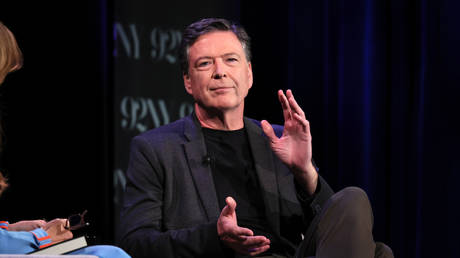 Ex-FBI director Comey under investigation for ‘call to assassinate Trump’
Ex-FBI director Comey under investigation for ‘call to assassinate Trump’
“The rule of law says people like him who issue direct threats against the president of the United States, essentially issuing a call to assassinate him, must be held accountable under the law,” she said in an interview with Fox News on Friday.
Comey and Trump have been at odds for years. The US president fired him as the FBI director in 2017, during his first term in the White House. Trump later accused him of spreading “false statements and lies” and of being a “dirty cop.”
During his 2024 reelection campaign, Trump survived an assassination attempt when a gunman took shots at him during a rally in Butler, Pennsylvania. The would-be assassin grazed Trump’s ear with a bullet, killed a spectator in the crowd behind him, and injured several others. In addition, at least one other plot to kill Trump was foiled in the lead-up to last year’s election.
-
Site: LifeNews
Despite the U.S. Supreme Court overturning Roe v. Wade and Planned Parenthood v. Casey on June 24, 2022, Planned Parenthood aborted more unborn children during the 2023-2024 fiscal year than the previous year and brought in a $100 million increase in taxpayer funding.
In the recently released 2023-2024 fiscal year annual report titled, “A Force for Hope,” Planned Parenthood performed 402,230 abortions during that time. That is an increase of nearly 10,000 abortions over the previous year (392,715).
The report also showed Planned Parenthood received about $792.2 million in “Government Health Services Reimbursements & Grants” versus $699.3 million from the previous year. U.S. taxpayers are
Click here to sign up for pro-life news alerts from LifeNews.com
Planned Parenthood’s largest financial contributor by supplying 39 percent of the organization’s $2 billion in revenue.
The nation’s largest abortion business, which commits over 1,100 abortions per day, presents killing unborn children and harming women as “inspiring hope.” The annual report begins, “Every time a patient walks through the doors of a Planned Parenthood health center, it is an act of hope — hope that they’ll get the care they need, that their decisions about their own bodies will be honored, that they’ll be truly seen. Every time a young person searches online for health information, their hope is that someone, somewhere has unbiased, real answers. Every time someone takes a birth control pill, or gets their IUD taken out, or goes with their partner for STI testing, they are filled with hope that the future they plan is possible.”
Twelve states now have banned elective abortions, and six states passed restrictions at or before 12 weeks of pregnancy. However, Planned Parenthood reports how it “helped” more than 100,000 women seeking abortions in the past year, particularly those who traveled from pro-life states elsewhere. More than 12,500 women received on average $275 to go toward travel costs. That’s more than $3.4 million in direct funding for abortion travel.
Chemical abortions now account for at least 63 percent of all U.S. abortions, an increase from 53 percent in 2020. Contributing to that is a new telehealth platform that Planned Parenthood provides in 42 states and Washington, D.C., for many services, including abortion pills to women who do not have to see a doctor in person to be screened for complications.
The annual report also highlights the first birth control pill available in the U.S. without a prescription as well as updated education videos available to anyone on YouTube regarding chemical abortions.
Even though it is the largest abortion provider in America, Planned Parenthood’s annual report claims that abortion is only four percent of the organization’s “medical services” for the last fiscal year. However, Planned Parenthood arrives at this false statistic by dividing the number of children it aborted (402,230) for the year by the number of “services” the group provided (9.4 million). This means when a woman visits a Planned Parenthood facility to obtain an abortion, she is also given a pregnancy test, an STI test, a cancer screening and contraception. Therefore, the abortion procedure would be considered 20 percent of the “services” she received. Using this deceptive formula, the report manipulates the data to make it appear as if abortion is a tiny percent of its “services,” though a much higher percentage of actual patients who visit Planned Parenthood facilities are there, first and foremost, to obtain an abortion.
Liberty Counsel Founder and Chairman Mat Staver said, “Planned Parenthood’s annual report reveals once again that its primary mission is making huge profit under the guise of ‘providing hope’ to women by killing their unborn babies. Abortion is not health care. It is human genocide for profit. We must continue to fight to protect these helpless children.”

The post Planned Parenthood is Killing 1,100 Babies Every Day. Defund It Now appeared first on LifeNews.com.
-
Site: LifeNews
Adriana Smith was 9 weeks pregnant when she sought medical treatment for severe headaches. Medical providers gave her medication but didn’t realize Smith had multiple blood clots in her brain until it was too late. Smith was declared brain dead about 3 months ago. A Georgia hospital has been keeping her on life support since, and her son is now about 21 weeks. Doctors are hoping to get him to 32 weeks.
These situations are rare, but not entirely unprecedented. One systematic review found that, in 35 cases of maternal brain death, 77% of neonates were born alive and 85% of those born alive had normal outcomes by 20 months after birth. However, in this study the mothers experienced brain death on average closer to 20 weeks gestation and were on life support for an average of about 7 weeks. Smith was only 9 weeks pregnant when she was declared brain dead, and she’s already been on life support for over 12 weeks. It’s certainly possible her son could be born alive and healthy, but the odds aren’t clear.
Smith’s family said doctors told them they can’t take Smith off life support due to Georgia’s abortion law. Media coverage doesn’t quote any doctors, attorneys, or any experts involved in either Smith’s case or Georgia law generally.
Click here to sign up for pro-life news alerts from LifeNews.com
Georgia law defines abortion as “the act of using, prescribing, or administering any instrument, substance, device, or other means with the purpose to terminate a pregnancy…” Removing life support would not involve “administering” anything. It’s not clear Georgia’s abortion law is actually the issue here.
It’s more likely that Georgia’s law regarding withdrawing life support for pregnant patients is the issue. GA Code § 31-32-9 states that doctors can’t withdraw life support from pregnant patients unless both (1) the fetus isn’t viable and (2) the patient had an advanced directive explicitly stating she wanted withdrawal of life-sustaining measures.
Note this code isn’t a result of Dobbs. It was enacted 15 years prior, in 2007. Most states have similar measures, including pro-choice states such as Alaska, Colorado, Illinois, Nevada, New Hampshire, and Pennsylvania.
So far I haven’t seen media coverage — or abortion advocates — make any mention of what Smith herself would have wanted in this situation. (I find it’s pretty common for abortion advocates to not seriously consider that some women would not want our unborn children to die, even if it costs us.) If abortion advocacy were primarily about autonomy, you’d think Smith’s likely perspective would be worth at least considering.
I also haven’t so far seen any mention of the perspective of Smith’s boyfriend, her son’s father.
There is discussion of the perspective of Smith’s mother, April Newkirk, who is upset that doctors said it’s not ultimately up to Smith’s family whether to take her off life support. Still even Newkirk says that, had it been the family’s choice, they “might not have chosen to end the pregnancy.”
It’s a testament to how very little abortion advocates value unborn children, that even in a case where the woman (1) cannot be harmed by continuing the pregnancy and (2) may very well have wanted her child to live, the framing is outrage that her son’s life is prioritized.
LifeNews.com Note: Monica Snyder is the executive director of Secular Pro-Life, an organization that uses non-religious arguments to promote the pro-life perspective. Snyder worked as an investigator with the human rights organization, Live Action, to investigate the Washington-Surgi Abortion Clinic to expose their late-term abortion practices. This appears in the November issue of National Right to Life News.

The post Doctors Fight to Save Life of “Brain Dead” Mom’s Unborn Baby appeared first on LifeNews.com.
-
Site: Zero HedgeTrump's Trade War Lit A Fire Under YETI CoolersTyler Durden Fri, 05/16/2025 - 15:00
Our previous supply chain analysis revealed a list of major US brands that remained heavily exposed to China. The ongoing trade war has lit a fire under U.S. management teams, accelerating efforts to shift production—either through friend-shoring or reshoring—as it appears likely that some level of tariffs on Chinese goods will remain through the second half of the year.
The latest U.S. company highlighting its China exposure is drinkware brand YETI, which disclosed at an investor conference this week that shifting production out of China has become a top priority.
Goldman analysts Brooke Roach, Evan Dorschner, and others wrote in a note on Thursday about the top takeaways from their visit to YETI's headquarters in Austin, Texas, for an investor meeting.
Roach said their conversations with management revolved around :
-
U.S. growth;
-
Drinkware;
-
Product innovation and portfolio extension;
-
Supply chain transformation and tariffs;
-
International expansion
On US growth, the drinkware business, and the innovation pipeline, the analyst summarized their conversations with management:
-
U.S. growth opportunity: YETI continues to see immense growth opportunity in its core U.S. market. Within this, management expects growth to be driven by three components: (1) Stoking brand heat; (2) Continuing to build out the product portfolio; and (3) Expanding the depth of their channels. On product, management's tone was especially positive on the bags category as a driver, but they also highlighted continued extensions of their core hard cooler and drinkware portfolios through new form factors, use cases, sizes, and other diversification.
-
Drinkware: While drinkware remains an area of pressure for the business overall given headwinds in specific SKUs, the company continues to see growth opportunity for the category as a result of innovation and new form factors. Management sounded particularly constructive on improving upon core products (such as stackable products vs. original items in the same family), as well as ceramic coated drinkware items and the upcoming sports jug launch. The food and cooking categories are also an area of opportunity, with management noting that several recent launches (food storage and bowls) were top requested items from ambassadors and customers. The company also pointed out its historical ability to weather other drinkware cycles in the past. Looking ahead, the company remains focused on driving relevancy in the core through innovation, though SKU productivity remains a key priority as well.
-
Approach to innovation: The company is accelerating its innovation pipeline, with plans to launch 30 products this year and sustain the faster pace of innovation recently reached, while simultaneously building brand stories around new product launches. YETI discussed its approach to innovation, noting they have dedicated senior leaders who focus on each of their core growth opportunities: (1) softgoods; (2) C&E, and (3) food and beverage. The company highlighted that its current product portfolio provides opportunities for significant expansion in the shoulder areas of where they currently play, with products having connections to the core brand. Importantly, all products must have durability, performance, and design as core principles, as well as offer relevance to the consumer in multiple aspects of their life. YETI is thus focused on broader use cases outside of core outdoor categories (i.e. bags and backpacks rather than just the subcategory of hydration bags). Management noted several new innovations are on the horizon, including a broader rollout of their small soft coolers / lunchbag category and additional SKUs in the backpack category.
Here's where analysts and YETI management discussed tariffs, sourcing, and international strategy.
The key takeaway: tariff pressures have accelerated YETI's supply chain shift out of China, with production increasingly moving to Thailand, Malaysia, and other Southeast Asian countries equipped with full-scale manufacturing capabilities.
-
Tariff commentary: YETI highlighted tariff disruption did drive the company to rework its product development process, driving a faster innovation cycle and speed to market. The company noted that the tariff impact will depend on timing of purchases and capitalization of inventory on the balance sheet (with constraints focused on new launches with production in China), but that it can recapture a lot of the pressures as they continue to diversify and optimize their supply chain.
-
Sourcing: Shifting production out of China remains a key priority for YETI. The company clarified that its top partners have been building manufacturing facilities in Thailand and Malaysia which are now ramping. Beyond this, tertiary partners are also shifting production outside of China but are in earlier stages of the transition, with factories set to open in SE Asia. Net, the company expects to have four key partners and five factory facilities outside of China in their first wave of diversification which leverages existing suppliers. Importantly, management noted these facilities have full manufacturing capabilities (not just finishing and testing), are efficient (strong labor force / robotics capabilities), and have competitive costing to China sourcing (following initial start-up inefficiencies).
-
International: Management reiterated the Australian and Canadian markets continue to perform well overall, and struck a constructive tone regarding the company's potential in the UK. Germany is also a high-potential market but is in earlier stages of scaling compared to the UK. YETI also highlighted the whitespace it has in Asia which is largely an untapped market for the company.
Roach has a "Neutral" rating on YETI shares with a 12-month price target of $28.
On Tuesday, Aaron Jagdfeld, CEO of Generac Holdings, appeared on Bloomberg Television to discuss the company's long-term strategy to reduce reliance on Chinese supply chains. He outlined that Generac has been reducing its supply chain exposure to China since President Trump's first term and will reduce its 10% exposure to 5% in 18 months.
Seattle, Washington-based Wyze Labs, a popular seller on Amazon of smart home and wireless camera products, revealed on X earlier this month that their "first tariff bill" has "accelerated" efforts to leave China in two months, with serious consideration of restoring supply chains in the United States.
Trump's tariff shock is working. It has always been about pressuring corporate America to detach from cheap China supply chains and either friend-shore or re-shore.
. . .
Just a reminder...
In Hot Water: YETI Bars Conservative Group from Customizing Cups https://t.co/1EGUoSSiY1
— zerohedge (@zerohedge) March 28, 2025 -
-
Site: PeakProsperityChris discusses vaccine narrative collapse, institutional distrust, economic crisis signals, and legal actions against pharmaceutical marketing practices.
-
Site: southern orders
Pope Leo XIII beautiful pectoral cross on Pope Leo XIV’s official photo:
And bombshell interview with Archbishop Cordilione who would make a great Cardinal Prefect for the Dicastery of Divine Worship!
‘Out of the banality’ - Cordileone on liturgical reform
-
Site: Zero HedgeNew College Grads Not Working Out, Most Hiring Managers Say: SurveyTyler Durden Fri, 05/16/2025 - 14:40
Authored by Mary Prenon via The Epoch Times,
Inappropriate attire, excessive use of cell phones, poor quality of work, and foul language are just a few of the reasons 65 percent of U.S. hiring managers gave for firing college graduates who had recently started their first job.
A Pollfish survey of 1,000 managers across America, reported by Resume.com, revealed the reasons that eight in 10 managers said newly hired college graduates did not work out during their first year on the job.
Excessive use of cell phones ranked as the top pet peeve of managers, at 78 percent. Some 61 percent of managers found their new hires were entitled or easily offended, while 57 percent noted these new employees were unprepared for the workplace. Lack of a work ethic scored 54 percent, followed by poor communication skills at 48 percent and lack of technical skills at 27 percent.
Other concerns managers had about the graduates included lateness, failure to turn in assignments on time, unprofessional behavior, and inappropriate dress and language. Seventy percent of companies surveyed noted that some hires had to be placed on performance improvement plans.
“Colleges don’t teach students how to behave in the workplace, and there is a lack of transitional support from both universities and employers,” Resume.org’s career coach Irina Pichura stated in the report.
“Most students graduate with little exposure to professional environments, so when they arrive at their first job, they’re often learning basic workplace norms for the first time. Colleges should have a workplace training program to support graduates’ transition to the workplace.”
Clark Lowe, CEO of O'Connor Company, a leading national commercial construction firm, agrees.
“Colleges do a disservice to students in not preparing them for work,” he told The Epoch Times. “Parenting has also been pushed off to the schools, and building of character has been pushed off to the workplace. That’s very frustrating!”
Lowe served as an adjunct professor for Mercy University in Dobbs Ferry, New York, for many years, teaching graduate business courses.
“A lot of professors have no work experience beyond teaching,” he said.
“They grow up in academia and stay there, but all of those degrees and certificates are not going to replace work experience.”
Based in Pinehurst, North Carolina, the O’Connor Company is a remote company with about 60 employees, including skilled construction workers, project managers, and staff in accounting, marketing, and administration. It develops nonresidential structures such as public and educational buildings.
Last year, the company hired 30 new employees and plans to add 10 more this year.
“The latest generation seems to be getting more and more entitled,” Lowe said.
He and his team have also had some problems with recent college graduates, especially those who had never held any type of job.
“In our experience, those people tend to be difficult to work with since the work ethic is not there and they have never learned what it’s like to earn their own paycheck,” he said.
Previous Work Experience Is a Must
Lowe looks for individuals who show initiative and drive and are excited about coming to work. Previous work experience is a must for his firm.
“We don’t care what type of work they did, whether it was in a gas station or retail store,” he said. “What’s important is that jobs teach them responsibility, time management, and a work ethic.”
Only 58 percent of companies responding to the Pollfish survey indicated they plan to hire from the class of 2025, and one in six hiring managers admit they’re hesitant to hire recent graduates at all. Of those managers who are open to hiring new Generation Z graduates, more than 50 percent are seeking qualities such as initiative, a positive attitude, a strong work ethic, adaptability, and openness to feedback.
Pichura also shared advice for recent graduates on how to demonstrate initiative during and after the hiring process.
“During the interview, candidates should come prepared with research and ideas,” she said.
She recommends using real examples, such as stories where the individual stepped up without being asked to solve a problem. She refers to the “Situation, Task, Action, Result” method as the “STAR” method.
Once hired, Pichura noted, a new employee should look for ways to take ownership of tasks, ask for feedback, and go beyond their role.
“Even in an entry-level role, new hires can stand out by looking for small ways to own tasks, solve problems, and offer solutions before being asked,” she said.
“Being reliable, meeting deadlines, and treating every task with care and intention builds trust and credibility early on.”
-
Site: Zero HedgeUMich Survey Suggests Women, Democrats, & Low-Income Americans Are Out Of Their TDS-Addled MindsTyler Durden Fri, 05/16/2025 - 14:30
Having embarrassed themselves with their TDS-driven cognitive dissonance over the past few months, Democrat-voting UMich respondents (and women, and low income Americans) in the preliminary May survey (a month after Liberation Day and also post-Pause and the massive meltup in stocks) turned the TDS-terror dial to '11'.
Consumer Expectations are now at their lowest since - drum roll please... May 1980...
Source: Bloomberg
Tariffs were spontaneously mentioned by nearly three-quarters of consumers, up from almost 60% in April; uncertainty over trade policy continues to dominate consumers’ thinking about the economy.
Note that interviews for this release were conducted between April 22 and May 13, closing two days after the announcement of a pause on some tariffs on imports from China.
The percentage of UMich respondents making unsolicited negative comments about news they've heard on government economic policy has surged to a record high of 66%!
Source: Bloomberg
The share of consumers expecting unemployment to rise in the year ahead increased for the sixth consecutive month and is now more than double the November 2024 reading and the highest since 2009.
Source: Bloomberg
Year-ahead inflation expectations surged from 6.7% last month to 7.3% this month, the highest reading since 1981 and marking five consecutive months of unusually large increases of 0.5 percentage points or more.
Source: Bloomberg
This month’s rise was seen across all three political affiliations. Long-run inflation expectations climbed from 4.4% in April to 4.6% in May, reflecting a particularly large jump among Democrats to a ridiculous 9.6% over the next year!!
Source: Bloomberg
Republicans did forecast a rise in their view of 5Y inflation expectations (while Democrats were flat at 5.1%)...
Source: Bloomberg
Spot the odd one out - UMich Democrats, The NY Fed, or The Market...
Source: Bloomberg
One more for fun - comparing Democrats view of the inflationary outlook to the 'hard' inflationary data...
Source: Bloomberg
Finally, given their historic track record (completely refusing to acknowledge the surge in inflation under Biden), should we simply be ignoring the manic Democrats screaming about inflation now?
Source: Bloomberg
The Republicans seemed to get it? But then again, they're all racist ignoramuses with no PhDs... so there's that, right!?
Sorry, one more that made us fucking laugh... one-third of women surveyed believe inflation over the next year will be 15% or higher...
Low-Income Americans are also terrified like never before...
So someone is lying: actual spending all time high while reported sentiment (based on 250 polled UMich respondents) is all time low.
Is the soft-data slump all driven by leftists imbibing mainstream media's desperate propaganda-fueled terror of what Trump is doing?
Perhaps that explains why soft survey data has started to turn back up to hard data reality in the last week as it's hard to hate and keep pushing out your depression-era forecasts when stocks are at record highs and jobless claims remain near record lows.
-
Site: AsiaNews.itIn his first address to the diplomatic corps accredited to the Holy See, the pontiff outlined the pillars of the Church's missionary action. In the Clementine Hall, he stressed the link between religious freedom and peace. 'Give new life to multilateral diplomacy,' he said. He reiterated his opposition to weapons: 'halt the production of instruments of destruction and death'. He cited today's challenges, like migration, the environment, and artificial intelligence. ...
-
Site: Zero HedgeNightmare New Jersey Transit Strike Cripples Rail ServiceTyler Durden Fri, 05/16/2025 - 14:20
New Jersey was hit by its first statewide transit strike in over 40 years early Friday morning, as 450 unionized locomotive engineers walked off the job amid a contract dispute about pay. The strike brought NJ Transit's rail network to a halt and disrupted service for 350,000 commuters.
The Brotherhood of Locomotive Engineers and Trainmen (BLET) announced the strike late Thursday night on X, sharing a post that included a link detailing the breakdown in contract negotiations between its negotiators and NJ Transit negotiators over terms of the new contract for locomotive engineers.
BLET locomotive engineers on strike at NJ Transit. Read more here: https://t.co/DdRhKTf8bh pic.twitter.com/4SR1PqUDIO
— Brotherhood of Locomotive Engineers and Trainmen (@BLET) May 16, 2025"After 15-hours of non-stop contract talks today, no agreement on a wage increase was reached this evening between BLET and NJ Transit managers," the union wrote in a press release, adding, "NJ Transit managers walked out of the talks shortly before 10 p.m. and through their actions have forced a strike despite the transit agency having the funds for a raise."
Rail Teamsters from the @BLET are on strike at New Jersey Transit and picketing major terminals in Newark, New York Penn Station, and Atlantic City.
— Teamsters (@Teamsters) May 16, 2025
If NJT can spend half-a-billion dollars on lavish penthouse offices, they can come back to the table with a fair deal for their… pic.twitter.com/HXvPC4BHcCBLET members have been in talks with NJ Transit since 2019 about a new labor contract, but have failed to reach a deal every time.
"In August 2023, the members of the local union voted unanimously to grant the BLET National President the authority to call a strike when it became lawful to do so and if a deal had not been reached," the union said.
BLET National President Mark Wallace blasted NJ Transit:
"NJ Transit has a half-billion dollars for a swanky new headquarters and $53 million for decorating the interior of that unnecessary building. They gave away $20 million in revenue during a fare holiday last year. They have money for penthouse views and pet projects, just not for their front-line workers. Enough is enough. We will stay out until our members receive the fair pay that they deserve."
Wallace was quoted by the local media outlet NBC 4 New York as saying that engineers are committed to the strike until a fair deal is reached.
NBC 4 New York provided a breakdown of key points of the contract dispute:
-
The Brotherhood of Locomotive Engineers and Trainmen went on strike at 12:01 a.m. Friday, leaving some 350K NJ Transit riders impacted
-
The nation's third-largest transit system, NJ Transit, provides nearly 1 million weekday trips, including into New York City. More NJ Transit buses are being added, but supplemental service can only accommodate about 20% of the people who could be accommodated if the trains were running
-
The MTA and other transit agencies are also adding service to help mitigate impacts
-
Wages have been the main sticking point. The union claims its members earn an average of $113,000 a year and says an agreement could be reached if that went to $170,000. NJ Transit leadership disputes the union's data, saying engineers have average total earnings of $135,000 annually
-
The last time there was a transit strike was in 1983. That one lasted about a month
A BLET spokesman said the union "is ready to bargain" and "returns to the table now." Talks are now scheduled for Sunday and will include federal mediators.
Earlier, NJ Gov. Phil Murphy apologized to commuters whose daily commutes to work were abruptly disrupted and called the labor action a "slap in the face of every commuter."
New Jersey Governor Phil Murphy said, “the contract being negotiated at this moment is about the long-term future of NJ Transit,” but the state will not “cave” in order to end the first railroad strike in more than 40 years for the agency https://t.co/RoqnQYu4jk pic.twitter.com/gp0a7hp0hk
— Bloomberg TV (@BloombergTV) May 16, 2025The New York Times noted: "The abrupt suspension of all of New Jersey Transit's train service on Friday will make it harder for Gov. Philip D. Murphy to claim that he rescued the troubled transit agency."
-
-
Site: Rorate Caelifor Rorate CæliMay 16, 2025Within hours after the election of Pope Leo XIV, Cardinal Burke sent the new Pope a heartfelt message of congratulations: Please join me in thanking Our Lord for the election of Pope Leo XIV, Successor of Saint Peter, as the Shepherd of the Church throughout the world. The Shrine of Our Lady of Guadalupe at La Crosse has a New Catholichttp://www.blogger.com/profile/04118576661605931910noreply@blogger.com
-
Site: LifeNews
This week I joined 112 other pro-life leaders in signing a crucially important letter to HHS Secretary Robert F. Kennedy Jr. and Martin A. Makary, M.D., Commissioner of the FDA.
Here’s what we told them.
The most comprehensive analysis of chemical abortion pills shows nearly 11% of women who take this toxic medicine suffered serious adverse complications.
Click Like if you are pro-life to like the LifeNews Facebook page!
(function(d, s, id) { var js, fjs = d.getElementsByTagName(s)[0]; if (d.getElementById(id)) return; js = d.createElement(s); js.id = id; js.src = "//connect.facebook.net/en_US/sdk.js#xfbml=1&version=v2.10"; fjs.parentNode.insertBefore(js, fjs); }(document, 'script', 'facebook-jssdk'));
In addition, one in 20 women require a second abortion attempt. Why? Because a common complication with chemical abortion is an incomplete abortion—that is, parts of the baby and/or placenta are left behind in the womb.
This opens the door to sepsis or other life-threatening infections.
Women are needlessly being placed directly in harm’s way, and we know why.
In cooperation with the Obama and Biden administrations the FDA eliminated crucial medical safeguards for women having chemical abortions. Original researchers were adamant that the protections now jettisoned were absolutely critical in protecting women.
Our letter pointed out that the FDA’s purpose is to safeguard the health and safety of Americans. Furthermore, it helps “the public get the accurate, science-based information they need…to maintain and improve their health.” Yet a growing body of evidence indicates these pills are unacceptably dangerous to women.
We encouraged HHS Secretary Kennedy and FDA Commissioner Makary to place the safety of women over the extreme politics of the abortion industry.
They are in an excellent position to thoroughly and impartially examine the dangers chemical abortion poses to women and act quickly to remedy any threats to their health or lives.
You can help educate others to the documented dangers of chemical abortion pills as well as the science behind abortion pill reversal. Simply sharing this information with the people around you may literally save a life.
LifeNews.com Note: Bradley Mattes is the President of Life Issues Institute, a national pro-life educational group.

The post Abortion Pills Leave Parts of Baby Inside Mother 5% of the Time appeared first on LifeNews.com.
-
Site: LifeNews
The nation’s leading abortion business “failed in attempting to rewrite the science of human development,” as a state Supreme Court ruled that the term “fetal heartbeat” legally protects unborn children from abortion at six weeks.
The South Carolina Supreme Court unanimously upheld the 2023 Fetal Heartbeat and Protection from Abortion Act, which safeguards babies from surgical or chemical termination the moment medical technology can detect “cardiac activity, or the steady and repetitive rhythmic contraction of the fetal heart.” After losing a previous case to declare the law unconstitutional, Planned Parenthood focused its third round of jurisprudence against the act on trying to redefine the onset of a “fetal heartbeat” from six weeks to at least nine weeks, affording the abortion giant to commit three more weeks of unrestrained abortion. But justices ruled that Planned Parenthood did not believe some of its own arguments, which relied heavily on semantics.
The state Supreme Court ruled unanimously on Wednesday that, while medical professionals may “disagree on [the] precise meaning” of nearly every medical term in the law, its use of the term “fetal heartbeat” constitutes a “biologically identifiable moment in time … when electrical impulses are detectable on an ultrasound — which even Planned Parenthood acknowledges occurs at approximately six weeks of pregnancy.”
Click Like if you are pro-life to like the LifeNews Facebook page!
(function(d, s, id) { var js, fjs = d.getElementsByTagName(s)[0]; if (d.getElementById(id)) return; js = d.createElement(s); js.id = id; js.src = "//connect.facebook.net/en_US/sdk.js#xfbml=1&version=v2.10"; fjs.parentNode.insertBefore(js, fjs); }(document, 'script', 'facebook-jssdk'));
“Time and time again, we have defended the right to life in South Carolina, and time and time again, we have prevailed,” said South Carolina Governor Henry McMaster (R). “Today’s ruling is another clear and decisive victory that will ensure the lives of countless unborn children remain protected and that South Carolina continues to lead the charge in defending the sanctity of life.”
The ruling comes as a triumph for pro-life state lawmakers, who saw Democrats storm out of the legislative proceedings over the original 2021 heartbeat bill, after House Minority Leader Todd Rutherford (D-74) declared, “[The] Democratic caucus is not going to participate in this farce of a vote about pretend life.”
“We commend the South Carolina legislature and Governor McMaster for enacting a pro-life law that relies on sound medical science and statistical evidence, which shows that a detectable fetal heartbeat reliably and overwhelmingly predicts a healthy live birth. The state’s high court was right to uphold this law, which is critical for protecting mothers and their unborn babies,” Erin Hawley, vice president of the Alliance Defending Freedom’s Center for Life and Regulatory Practice, told The Washington Stand. “All human life is worth protecting, and the people of South Carolina have been eager to affirm life and prevent the obvious harms that abortion causes women and their children.”
Justices Reject Planned Parenthood’s Word Games
In its unsuccessful efforts to loosen the law’s protections, the nation’s largest abortion business engaged in a series of tendentious semantical arguments. Planned Parenthood tried to argue doctors cannot measure a “fetal heartbeat,” because a child’s heart is not fully developed and separated into four chambers until nine weeks’ gestation. The abortion giant also claimed, “while there is repetitive detectable embryonic electrical activity after approximately six weeks,” that activity is not “steady or rhythmic” until “after approximately nine weeks.” Finally, Planned Parenthood attorneys quibbled over the law’s use of the term “fetal,” asserting that “it is uncontroverted that there is no ‘fetus’ until after nine weeks of pregnancy, as at six weeks there is only an embryo.”
But the court rejected these word games. “Using the common, ordinary understanding of these words, the text of the definition of ‘fetal heartbeat’ describes what a medical professional may observe as electrical impulses on an ultrasound at approximately six weeks of pregnancy,” the justices ruled. They added that legislators regularly used the terms “fetus” and “embryo” interchangeably. And although Planned Parenthood now disputes the onset of a fetal heartbeat, “we could find not one instance during the entire 2023 legislative session in which anyone connected in any way to the General Assembly framed the Act as banning abortion after approximately nine weeks” rather than six.
Conservatives, Planned Parenthood, and Judicial Activists Agree: Fetal Heartbeat Begins at Six Weeks
Justices cited Planned Parenthood’s previous legal arguments to imply the organization argued in bad faith. “While Planned Parenthood now argues its doctors are unclear as to which point in time abortion is prohibited” under the fetal heartbeat protection act, “it has previously stated the language from both the 2021 Act and the 2023 Act clearly prohibits abortion at approximately six weeks.”
The court noted that Planned Parenthood’s 2021 legal injunction referred to the heartbeat bill as a “Six-Week Ban,” a conclusion its legal counsel repeated during oral arguments.
Planned Parenthood’s website once admitted that during weeks 5-6 “[a] very basic beating heart and circulatory system develop.”
Wednesday’s ruling also noted that liberal U.S. Supreme Court Justice Sonia Sotomayor’s dissent in the 2021 Whole Women’s Health case said the Texas Heartbeat law’s protections took effect “starting approximately six weeks after a woman’s last menstrual period.”
Rather than detect a fetal heartbeat, Planned Parenthood suggested the court allow abortionists to determine a child’s gestational age by measuring the distance from its cranium to rump. But, the ruling stated, “Planned Parenthood was unable to say what the decisive measurement would be that would indicate the embryo had completed the transition into a fetus, nor have we been able to do so.”
Planned Parenthood Cannot ‘Rewrite the Science of Human Development’: Pro-Life Advocates
Pro-life advocates celebrated the state court’s clear and unequivocal ruling.
“Planned Parenthood has failed in attempting to rewrite the science of human development to further their agenda for more abortions and more profit. The level of science denial from this abortion giant that receives $800 million in taxpayer funding annually should astound South Carolinians who overwhelmingly re-elected Gov. Henry McMaster and state Republicans after they enacted the heartbeat law,” SBA Pro-Life America Political Director Caitlin Connors stated. “We celebrate that the justices saw through Planned Parenthood’s charade and upheld the law that protects 4,829 lives annually.”
After the law took effective in late August 2023, the number of abortions carried out in the state fell by 78% the first month after the heartbeat protection went into effect and remained flat.
“The pro-life movement continues to win in defending life-affirming laws in state courts following the Dobbs decision. This is a great victory not only for South Carolina, but for mothers and unborn children across the state,” Carolyn McDonnell, litigation counsel for Americans United for Life, remarked. “This is justice. This is truth. And every child saved is worth it,” added 40 Weeks for Life.
Lisa Van Riper, president of South Carolina Citizens for Life, called the ruling “a win, not only for the heartbeats of the unborn, but for all the members of our human family who may become or who are vulnerable in our society.”
State Attorney General Alan Wilson (R) promised he would “continue to stand for life, defend the law, and fight for the will of South Carolinians in every courtroom.”
As of March 26, 16 states had laws in effect protecting unborn children at six weeks or earlier, according to the pro-abortion Guttmacher Institute, formerly a part of Planned Parenthood.
The court victory prodded SFLAction President Kristan Hawkins to urge state lawmakers to pass the more protective Human Life Protection Act (H. 3457), which would protect unborn children from abortion at conception and penalize abortionists who ply their trade in the state with a felony punishable by a $10,000 fine and/or two years in prison. The bill, introduced by State Rep. John McCravy (R-13), who leads the General Assembly’s South Carolina Family Caucus, would allow an abortion to prevent a woman’s death or “serious risk of a substantial and irreversible impairment of a major bodily function, not including psychological or emotional conditions.” It has no impact on in vitro fertilization (IVF) or any form of hormonal contraception including so-called “emergency contraception.”
Steve Petit, president of the Palmetto Family Council, hailed Wednesday’s court decision even as he promised to sustain legislative momentum toward protecting all unborn life. “We celebrate this ruling as a significant step toward a culture that honors the inherent dignity of every human life, and we will continue our work to see life fully protected from conception to natural death across the Palmetto State,” he said.
LifeNews Note: Ben Johnson is senior reporter and editor at The Washington Stand.

The post Victory For Babies as South Carolina Supreme Court Upholds Heartbeat Law appeared first on LifeNews.com.
-
Site: Zero HedgeDemocrats Are Digging Their Political Graves... And Trump Is Selling Them The ShovelTyler Durden Fri, 05/16/2025 - 14:00
Authored by Larry Kudlow via RealClearPolitics.com,
While Democrats are busy defending criminal gang members and terrorists from Tren De Aragua and MS-13, President Trump is putting on a command performance in the Middle East.
In a blockbuster speech yesterday at Riyadh, Saudi Arabia, Mr. Trump said this: “Before our eyes, a new generation of leaders is transcending the ancient conflicts and tired divisions of the past, and forging a future where the Middle East is defined by commerce, not chaos.”
Then, he urged the Saudis to join the Abraham Accords, telling them:
“It’s my fervent hope, wish, and even my dream, that Saudi Arabia — a place I have such respect for — will soon be joining the Abraham Accords. … You will be greatly honoring me and you will be greatly honoring all those people that have fought so hard for the Middle East.”
Then, he stunned the audience and drew a standing ovation by announcing that he’s lifting American sanctions on Syria.
Today, he met with the Syrian president, the first time an American president has done so in 25 years.
In between all of this, Mr. Trump has probably raised something around $2 trillion of investment from the Saudis and the Qataris.
Yet he also made it clear that Iran could never have a nuclear weapon.
Let me quote:
“Iran can have a much brighter future — but we will never allow them to threaten America and our allies with terrorism or a nuclear attack. The time is right now for them to choose.”
Plus, all that money Mr. Trump is raising to invest in America will be the beneficiary of the lowest taxes and regulations of any major country in the world.
That’s because another Trump success is the big, beautiful tax cut bill that just passed the House Ways and Means Committee under the excellent stewardship of its chairman, Congressman Jason Smith.
Of course, Democrats are gnashing their teeth at Mr. Trump’s flurry of new successes.
Not only his tax policies — but a number of trade and tariff deals, rock-bottom consumer inflation, a resilient economy, and a huge rebound in the stock market.
Democrats thought they could pound Mr. Trump with tariffs, but he has turned the tables on them with his adroit dealmaking.
And, as mentioned before, Democrats backing criminals and gangsters in their crusade to stop deportations are digging a deeper and deeper political grave for themselves.
And Mr. Trump is selling them the shovel.
-
Site: RT - News
Karim Khan was seeking arrest warrants for Israeli leadership at the time the accusations surfaced, Alessandro Bruno told RT
The timing of the sexual assault allegations brought against International Criminal Court (ICC) Chief Prosecutor Karim Khan is extremely suspicious, geopolitical analyst Alessandro Bruno told RT in an interview on Friday.
The fact that the ICC’s head prosecutor was working on a high-profile case at the time, which involved the issuance of arrest warrants against the Israeli leadership, “raises many questions,” he added.
Last May, Khan announced that he would apply for arrest warrants for Israeli Prime Minister Benjamin Netanyahu and his then Defense Minister Yoav Gallant, as well as top figures in the Hamas leadership, for war crimes committed in the Gaza conflict. The ICC issued the warrants last November, around the time when accusations against Khan surfaced.
The Chief Prosecutor has since taken leave from his role, pending the outcome of an external investigation, multiple media outlets reported on Friday, citing the ICC. Khan has denied any wrongdoing.
“The timing of the allegations is, in my view, extremely suspicious. Extremely!” Bruno told RT on Friday.
Read more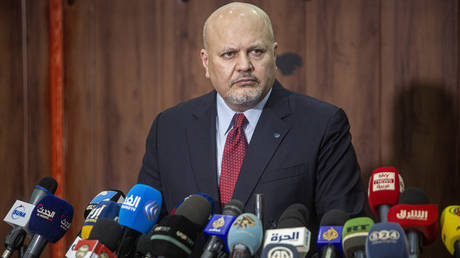 ICC chief prosecutor pushed for charges on Netanyahu after facing sex assault allegations – WSJ
ICC chief prosecutor pushed for charges on Netanyahu after facing sex assault allegations – WSJ
“The fact that the prosecutor was working on an important case concerning alleged genocide in Palestine and related accusations against the prime minister of Israel, I think I would have a little bit of skepticism as well,” he added.
Bruno suggested that, given Khan’s central role, the allegations could affect the ICC’s work on the case.
“The accusations could very much compromise the court’s decision, because he was the lead prosecutor on the case,” he said.
The analyst also noted that the scandal could further “undermine” the ICC’s credibility, especially in countries like Israel and the United States, neither of which are members of the court.
When asked why ICC member states Poland and Hungary refused to comply with the court’s arrest warrant for Netanyahu, Bruno replied that the judicial body mostly works against the leaders of developing countries.
READ MORE: ICC called on to investigate Biden
“It is a controversial body. It’s supposedly run by the UN, but it has had bite, interestingly enough, against dictators in developing countries,” Bruno said.
Former Philippines President Rodrigo Duterte was arrested in Manilla on an ICC warrant in March, and extradited to The Hague on charges of crimes against humanity. An overwhelming number of previous extraditions by the court involved individuals from African countries.
-
Site: RT - News
Washington will send out letters to some 150 countries instead of striking deals with each individually
Washington will inform 150 countries of updated tariff rates with the US by post within the coming weeks, US President Donald Trump announced on Friday. It is no longer feasible to meet individually with every country seeking a trade agreement, he explained.
On April 2, dubbed by the US president as ‘Liberation Day’, the White House imposed a baseline 10% tariff on all imported goods and additional surcharges on countries such as China, Mexico and Canada citing trade imbalances.
The US president indicated at the time that the White House would negotiate individual deals with all its trade partners in the following weeks, but he has now suggested that the administration will set terms unilaterally.
Speaking at a business roundtable in Saudi Arabia on Friday, Trump stated that the US will impose new tariff rates “over the next two to three weeks.” Washington had been approached by a large number of governments requesting individual deals but, Trump stressed, “it’s not possible to meet the number of people that want to see us.”
Read more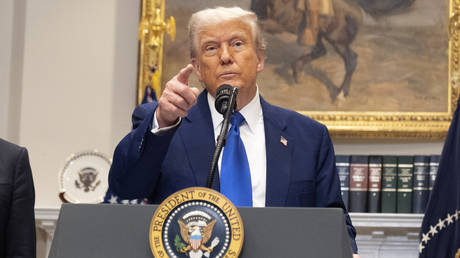 EU nastier than China – Trump
EU nastier than China – Trump
“[W]e have, at the same time, 150 countries that want to make a deal,” he said.
Treasury Secretary Scott Bessent and Commerce Secretary Howard Lutnick would be responsible for sending out letters detailing the new tariff rates that will apply to each country, Trump said.
The new rates “would be very fair, but we’ll be telling people what they’ll be paying to do business in the United States.”
Major US retailers such as Walmart and Target have said they plan to raise prices in response to the rising cost of imports. Trump has dismissed the concerns, claiming any price hikes will be small and that businesses will adapt by shifting their supply chains.
The White House has not yet disclosed the content of the letters or the exact rates that will be applied. It is also unclear whether countries will be given a timeline or conditions under which the rates could change.
-
Site: Mises InstituteScott Horton exposes how US foreign policy disasters threaten peace, prosperity, and freedom.
-
Site: Mises InstituteTom DiLorenzo exposes the dangerous "Treasury of Virtue" that justifies endless wars and imperialism.
-
Site: Mises InstituteIlana Mercer addresses Israel’s "Hasbara" myths, exposing harsh truths behind Gaza’s suffering—and the moral complicity of America in enabling atrocities.
-
Site: Mundabor's blogFairly mediocre but largely harmless homily from the Holy Father. When reading the excerpt, I feel as if the presence of a toxic drunkard now belong to the past, but you are now near a guy with a strong perspiration challenging your nose. In Leo’s case, it seems that the whiffs of Vatican II are […]
-
Site: RT - News
The sides have reached a mutual understanding to continue negotiations following discussions in Istanbul, Hakan Fidan has said
Moscow and Kiev have agreed in principle to hold follow-up negotiations to resolve the Ukraine conflict, according to Turkish Foreign Minister Hakan Fidan, who participated in the talks as an observer.
The announcement follows the meeting between the delegations in Istanbul on Friday, facilitated by Türkiye, marking the first direct negotiations between Russia and Ukraine in three years.
“The delegations of Russia and Ukraine have reached a principled agreement regarding a new meeting,” Fidan said on X (formerly Twitter).
Fidan stated that the parties have agreed to exchange 1,000 prisoners of war from each side, representing the largest such swap since the conflict escalated in 2022. Russia’s chief negotiator Vladimir Medinsky and Ukrainian Defence Minister Rustem Umerov confirmed the agreement.
Read more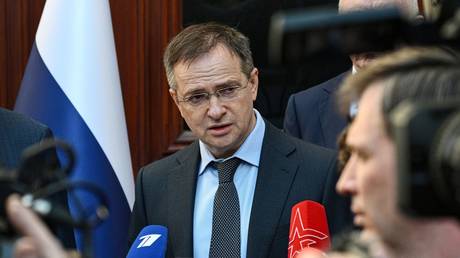 Topics discussed during Istanbul talks revealed
Topics discussed during Istanbul talks revealed
Both sides have also consented to share written proposals detailing conditions for a potential ceasefire, he added.
The talks followed a surprise invitation last Sunday by Russian President Vladimir Putin, to restart negotiations to resolve the conflict.
There is no set timeline for Russia and Ukraine to exchange ceasefire proposals, but a fundamental agreement to do so has been reached, a TASS source reported.
Türkiye has consistently positioned itself as a neutral mediator, leveraging its diplomatic relations with both Russia and Ukraine to facilitate dialogue.
In 2022, Medinsky’s team negotiated a potential peace deal. Its terms offered Kiev Russian security guarantees in exchange for neutrality and restrictions on its standing army. At the last moment Kiev unilaterally pulled out the negotiations. David Arakhamia, who headed the Ukrainian delegation, later revealed following the pre-approval of the draft treaty that then-British Prime Minister Boris Johnson had told Kiev to “just fight,” leading to the continuation of hostilities.
-
Site: AsiaNews.itTomorrow is the anniversary of the abduction by Chinese authorities of the child designated as the reincarnation of the second-highest Tibetan Buddhist authority. This comes as concerns grow about possible interference in the succession of the Dalai Lama who is set to celebrate his 90th birthday shortly. Meanwhile, Tibet Radio was born in exile to fill the void left by the closure of the Tibetan-language service at Radio Free Asia and Voice of America.
-
Site: Mises InstituteIn this week‘s Friday Philosophy, Dr. David Gordon takes us through the high points of Robert Nozick by Ralf M. Bader, who writes favorably about Anarchy, State, and Utopia. In fact, Dr. Gordon believes Bader has made important contributions to libertarian thought.
-
Site: RT - News
Washington reportedly plans to remove individuals with gender dysphoria from the US military via medical checks
The White House is planning to instruct senior military officials to identify people who are transgender or have gender dysphoria and make them undergo medical checks in a process which would lead to their dismissal from the armed services, the Associated Press reported on Thursday, citing senior defense officials.
The latest move comes amid a broader campaign to remove transgender service members from the American military, which US President Donald Trump launched shortly after his inauguration on January 20. Trump’s executive order declared that identifying as transgender “conflicts with a soldier’s commitment to an honorable, truthful, and disciplined lifestyle” and would hamper military preparedness.
The term “gender dysphoria” refers to psychological distress that results from an incongruence between one’s biological sex and one’s ‘gender identity’.
Read more US Supreme Court backs Trump’s transgender military ban
US Supreme Court backs Trump’s transgender military ban
According to officials who spoke to the news agency on condition of anonymity, commanders who become aware of service members with gender dysphoria — whether current, historical, or symptomatic — would be required to initiate individualized reviews of their medical records.
The news comes a week after the Supreme Court ruled that the White House is allowed to enforce its ban on transgender individuals in the military while other legal challenges proceed.
Earlier this month, the Pentagon issued a directive enforcing the immediate removal of around 1,000 openly transgender service members from the military, giving those affected until June 6 to resign voluntarily or face discharge. The department added that they would receive roughly double the amount of separation pay compared to those who do not come forward.
-
Site: LifeNews
On March 31, a 21-year-old woman required emergency transport from the Flossmoor Planned Parenthood in Illinois after a failed dilation and evacuation abortion. This botched abortion brings the number of known women injured in just one month by Illinois abortion facilities to six – with a grand total of eleven Illinois injuries in 2025 so far.
According to 911 records provided by Pro-Life Action League, this woman was suffering from “intractable pain with an unknown source.” Intractable pain is generally defined as pain that is so severe, relentless, or debilitating that it does not respond to typical treatments.
The Planned Parenthood staffer listed off several strong medications already in this woman’s system from sedation for the abortion: ketamine, fentanyl, and Versed. At the time of the call, the staffer said the woman was also being administered “50 of additional fentanyl for her pain.”
Even with such powerful medications, her pain was still so severe that she required an ambulance.
HELP LIFENEWS SAVE BABIES FROM ABORTION! Please help LifeNews.com with a donation!
Though the Planned Parenthood staffer did not specifically mention an abortion injury, she did admit they were unable to finish the D&E procedure. The reason is not clearly stated, whether it was directly related to the intense pain or some other complication. The staffer also never volunteered where the pain was located, only that it was from “an unknown source.”
Troy Newman, President of Operation Rescue comments, “If you develop horrific pain just moments after undergoing something as traumatic to the body as a dilation and evacuation abortion – which Planned Parenthood wasn’t able to complete, meaning they botched it – you’d think the pain would be from a very obvious and likely source, not an ‘unknown’ one.”
During a D&E, the mother’s cervix is dilated and her baby is painfully dismembered by using special tongs with teeth that can grab onto hands, legs or other body parts and tear them from the uterus. The head often has to be crushed in order to finish removal.
“It’s clear that this mother is in need of emergency care, but there’s a second victim in this, and every, abortion,” adds Newman. “If Planned Parenthood was unable to complete an abortion that is only considered successful after a child’s body has been torn limb from limb, I shudder to think what state this baby’s body might have been left in from an unfinished D&E. Was the child’s body even fully removed from the mom?”
Just days before this botched abortion took place in Flossmoor, national news broke of a lawsuit filed by a woman who underwent another botched D&E in Illinois, during which abortionist Keith Reisinger-Kindle tore a quarter-sized hole in the woman’s uterus and left half of the child’s dead body in her abdomen.
“Illinois is called an ‘abortion destination,’” says Newman, “but ‘abortion devastation’ is a much more accurate description. Illinois no longer requires abortion clinics to be regulated. Routine inspections, common sense safety protocols, oversight and accountability – all of those are now optional, and it shows. Women are practically being streamlined into emergency rooms all over this state.”
In the month of March, alone, six women landed in the emergency room after botched abortions and complications in clinics across the state:
- March 5, Planned Parenthood (Aurora, IL) – Emergency transfer for a woman in her late twenties with heavy bleeding following a “procedure” (i.e. an abortion).
- March 7, Hope Clinic (Granite City, IL) – Citizens witnessed a patient walk herself to the emergency room across the street from the clinic.
- March 11, Hope Clinic (Granite CIty, IL) – Citizens witnessed an ambulance transfer a woman from the clinic to the hospital across the street.
- March 13, Near North Planned Parenthood (Chicago, IL) – Emergency transfer for a 23-year-old woman with heavy bleeding “post-procedure” (i.e. an abortion).
- March 22, Hope Clinic (Granite City, IL) – Emergency transfer for a 30-year-old woman who was “having too much bleeding.”
- March 31, Planned Parenthood (Flossmoor, IL) – Today’s main story, a 21-year-old woman with “intractable pain with an unknown source” after a failed D&E abortion.
“Operation Rescue is keeping a close watch on women being injured in the unregulated, unconscionable, abortion state of Illinois, while state officials standby and do nothing to hold these clinics accountable,” adds Newman.
Thanks to the diligent documentation of groups like Pro-Life Action League and other caring sidewalk advocates, Operation Rescue has been able to maintain a running tally of abortion injuries this year, investigating each one.
“Since January 1, eleven women have been injured by six different clinics,” Newman says. “Last year, we investigated a total of 18 emergencies in this state. Now, we are not even six months into 2025 and we have almost reached 2024’s total. Illinois lawmakers need to wake up and acknowledge that patients – not abortion clinics – are the ones who need protecting in their state.”
LifeNews Note: This article was originally published by Operation Rescue, a leading pro-life, Christian activist organization dedicated to exposing abortion abuses, demanding enforcement, saving innocent lives, and building an abortion-free America. The author, Sarah Neely, is Chief Operating Officer for Operation Rescue.

The post Planned Parenthood Clinic Injured 6 Women in Botched Abortions in One Month appeared first on LifeNews.com.
-
Site: AsiaNews.itThe priest is one of the few who knows the Filipino Sign Language. His choice goes back to a meeting with a group of deaf people during the papal visit in 2015. Ministering the sacraments, starting with confession, represents a challenge. Working with Setsunan University in Osaka has been a success.
-
Site: Ron Paul Institute - Featured Articles
The New York Times this week reports that the Trump administration has canceled many grants that were to fund “research” on “misinformation.” This is being presented by the media as a dastardly deed that will supposedly allow the spread of misleading or false information through various media channels.
Of course, if there were any genuine interest in studying the most egregious efforts to spread misinformation, media outlets like the Times would study themselves and their friends in the regime. After all, few organizations have been more complicit than the national American media and the US foreign policy establishment when it comes to spreading much of the worst propaganda in American history. I say “worst” because this propaganda has often been used in service to the worst ends: to gin up support for a variety of wars resulting in the deaths of thousands—sometimes even hundreds of thousands—of innocents.
Relatively recent media-regime partnerships in propagandistic misinformation include the “Russiagate” hoax, various efforts to obscure US meddling in Ukraine, and the nearly nonstop drumbeat of “news” stories over the past twenty years designed to push for regime change in various countries from Venezuela to Russia to Libya and to Syria—where the Assad regime, according to US design, was recently replaced by Islamist terrorists. And then, of course, there is the nonstop stream of misinformation designed to prop up the State of Israel and obscure its many war crimes. And let’s not forget the fictional “weapons of mass destruction” in Iraq which the US presented to the United Nations as established fact.
Throughout all this, the interventionist “foreign policy blob” in Washington received near universal support from its friends at publications like the Times and the Washington Post.
The United States did not invent these tactics. Over the past 100-plus years, however, perhaps no regime was more innovative than the British when it came to inventing “facts” designed to manufacture popular consent for wars and more foreign intervention. The United States has done its best to adopt similar methods, however, and creating invented narratives in service to the regime’s foreign policy goals is now standard operating procedure for the American state as well.
The Great War: The Turning Point
Throughout history, most great powers world have long lied to buttress their war efforts, but these efforts greatly increased in magnitude and sophistication during the twentieth century, mostly with the assistance of increasingly centralized organs of mass media.
For an insightful narrative on how this new “propaganda state” developed, we can consult the works of historian Ralph Raico, who suggests that the true turning point came with the First World War when the British regime, with the help of the media, engaged in a propaganda campaign of impressive effectiveness. Specifically, Raico posits that modern wartime propaganda began with “the Belgian atrocity stories of 1914, which was maybe the first great propaganda success in modern times.”
The stories of which Raico speaks were part of a concerted British campaign to wildly exaggerate German aggression in Belgium and to send the message that the Germans were a barbaric race unlike the civilized French and British people of Europe. It was mostly based on an official British government report known as the Bryce Report. The report made countless unsubstantiated claims about mass rapes, children with their hands cut off, violated nuns, and Canadian soldiers crucified on barn doors. This produced horror and anti-German zealotry around much of the world.
But there was one problem: it was nearly all based on lies. Raico writes:
What is the story of the Belgian atrocities? The story of the Belgian atrocities is that they were faked. They were fabricated. They were phony. The pictures were photographed in particular buildings which are known in Paris. The stage sets were designed by designers for the Parisian opera. The stories were made up out of … whole cloth and spread by British propaganda as another weapon in the war—especially in the war for the minds of the neutral countries. …[T]his turns a good deal of public opinion against the Germans.
Raico adds one especially ironical note, and quotes historian Thomas Fleming, who according to Raico,
to his credit, mentions that the real cases of people, including children, with their hands cut off occurred in the Congo beginning in the 1880s, at the behest of the Belgian king Leopold II. Because of their great extent and nearly incredible cruelty, it’s those that deserve to be called “the Belgian atrocities.”
Chief among those neutral countries that were targets of British propaganda, of course, was the United States.
The British regime was desperate to have the Americans enter the war on the American side, and the British almost spared no trouble or expense convincing the Americans that the British were fighting against an enemy of untrammeled malice. The program was very successful. Raico notes that an
ingrained bias of the American political class and social elite was galvanized by British propaganda. On August 5, 1914, the Royal Navy cut the cables linking the United States and Germany. Now news for America had to be funneled through London, where the censors shaped and trimmed reports for the benefit of their government. Eventually, the British propaganda apparatus in the First World War became the greatest the world had seen to that time; later it was a model for the Nazi Propaganda Minster Josef Goebbels. Philip Knightley noted:
British efforts to bring the United States into the war on the Allied side penetrated every phase of American life. . . . It was one of the major propaganda efforts of history, and it was conducted so well and so secretly that little about it emerged until the eve of the Second World War, and the full story is yet to be told.
The Americans Adopt British Methods
Ultimately, the British propaganda effort worked and the United States government enthusiastically entered the war on the side of Britain. This went against what was still a very large portion of the American public’s antiwar preferences, but the British had won the American elites over to their side.
After all, as the British effort mounted, even the Republican party’s leadership began pressuring Woodrow Wilson to take a more hardline anti-German stance. As Raico puts it “Americans, who devoutly wished to avoid war, had no spokesmen within the leadership of either of the major parties.”
Once the US entered the war, the US implemented its own propaganda barrage, and now it took on an additional dimension of outright censorship. For this, the media and the nation’s intellectuals were enlisted to push the war message, and, as Raico writes
public schools and the universities were turned into conduits for the government line. Postmaster General Albert Burleson censored and prohibited the circulation of newspapers critical of Wilson, the conduct of the war, or the Allies. The nation-wide campaign of repression was spurred on by the Committee on Public Information, headed by George Creel, the U.S. government’s first propaganda agency.
Just one example of the regime’s capture of educational institutions could be found in how The New York Times praised the President of Columbia University for dismissing faculty members who opposed the regime on conscription.
American Propaganda After the Great War
The Second World War brought another resurgence in war propaganda, and this time, American cooperation with British forces was virtually guaranteed ahead of time. By 1939, Roosevelt was comfortable promising King George VI “full support for Britain in case of war,” as Raico puts it.
By 1940, even before the US entered the war, The US government was working hand in glove with the British government to convince Americans of the necessity of US involvement in the war. As Raico notes, the full extent of this collaboration was covered up for decades, although,
In 1976, the public finally learned the story of William Stephenson, the British agent code named “Intrepid,” sent by Churchill to the United States in 1940. Stephenson set up headquarters in Rockefeller Center, with orders to use any means necessary to bring the United States into the war. With the full knowledge and cooperation of Roosevelt and the collaboration of federal agencies, Stephenson and his 300 or so agents “intercepted mail, tapped wires, cracked safes, kidnapped, . . . rumor mongered” and incessantly smeared their favorite targets, the “isolationists.” Through Stephenson, Churchill was virtually in control of William Donovan’s organization, the embryonic U.S. intelligence service. Churchill even had a hand in the barrage of pro-British, anti-German propaganda that issued from Hollywood in the years before the United States entered the war. Gore Vidal, in Screening History, perceptively notes that starting around 1937, Americans were subjected to one film after another glorifying England and the warrior heroes who built the Empire. As spectators of these productions, Vidal says: “We served neither Lincoln nor Jefferson Davis; we served the Crown.”
Vidal was so impressed—in a bad way—by the continued success of British propagandists in this effort that he remarked:
For those who find disagreeable today’s Zionist propaganda, I can only say that gallant little Israel of today must have learned a great deal from the gallant little Englanders of the 1930s. The English kept up a propaganda barrage that was to permeate our entire culture…. Hollywood was subtly and not so subtly infiltrated by British propagandists.
Raico describes how closely the US and the UK collaborated in these efforts, and how successfully. By 1941, there was no doubt where the US regime would come down on the war issue. The primary question by then was how much Roosevelt would be able to drum up American hostility against Japan. In this respect, of course, he succeeded quite well.
A general worldview favoring endless international intervention was supplemented and cemented in the American mind for decades afterward by the ultimate purveyors of propaganda: the government schools. First and foremost was an effort to ensure that executive power was unlimited in international affairs claimed by Roosevelt and his successors. Raico writes:
Back in 1948, Charles Beard already noted the dismal ignorance among our people of the principles of our republican government: American education from the universities down to the grade schools is permeated with, if not dominated by, the theory of presidential supremacy in foreign affairs. Coupled with the flagrant neglect of instruction in constitutional government, this propaganda . . . has deeply implanted in the minds of rising generations the doctrine that the power of the president over international relations is, for all practical purposes, illimitable.
The US propaganda apparatus became less focused on British concerns after the war, but was deftly turned toward promoting US regime interests during the Cold War. In his work on the Truman years, Raico notes that by the late 1940s, Truman was also pressing for fresh hostilities, including open warfare, against the new enemy, the Soviet Union. Those who resisted, especially Republicans form the Taft wing of the party, were accused of being Stalin apologists.
In this, Truman, in what had become a well established pattern of American life, was assisted by elite journalists at media outlets. Raico notes:
Truman’s campaign could not have succeeded without the enthusiastic cooperation of the American media. Led by the Times, the Herald Tribune, and Henry Luce’s magazines, the press acted as volunteer propagandists for the interventionist agenda, with all its calculated deceptions. (Thee principal exceptions were the Chicago Tribune and the Washington Times–Herald, in the days of Colonel McCormick and Cissy Paterson.) In time, such subservience in foreign affairs became routine for the “fourth estate,” …. Overwhelmed by the propaganda blitz from the administration and the press, a Republican majority in Congress heeded the Secretary of State’s high-minded call to keep foreign policy “above politics” and voted full funding for the Marshall Plan.
Voices in favor of peace were shouted down and banished from public discourse. Historian Steven Ambrose sums up the Truman-media victory:
When Truman became president he led a nation anxious to return to traditional civil-military relations and the historic American foreign policy of noninvolvement. When he left the White House his legacy was an American presence on every continent of the world and an enormously expanded armament industry. Yet so successfully had he scared hell out of the American people, the only critics to receive any attention in the mass media were those who thought Truman had not gone far enough in standing up to the communists. For all his troubles, Truman had triumphed.
By the end of the Truman years, the pattern was well established, based largely on the earlier efforts of British propaganda that was developed years earlier. Here were all the elements of manufacturing consent that would be employed during the Korean War, the Vietnam War, the arms wars of the 1960s and 1980s, and the new “regime change” wars of the post-Cold War world.
In this, we perhaps find the answer to a question posed by Raico during one of his lectures:
Isn’t it funny how, with the possible exception of Vietnam, all of America’s wars have been justified and have been right and good? I mean, what are the odds of something like that? A major power’s every war has been good, and the enemy has always been unbelievably horrible?
He already knew the answer. It was the state’s propaganda that made it possible for Americans to believe that virtually every new war is some kind of crusade against evil. Thanks to propaganda, the American thinking on foreign policy—which, in an earlier age had been more pragmatic and less moralistic—had taken on its modern tone of quasi-religious righteousness.
Indeed, in this contrast with America prior to the twentieth century, and the concomitant degeneration into an era of total war, we get some hint of just how much a century of relentless propaganda has fashioned the American mind. Only in examining its history can we hope to fully understand the insidiousness and effectiveness of these methods. It is necessary to also have knowledge of their origins and this allows us to better understand the transformation that took place in the first third of the twentieth century as the American mind became accustomed to a nonstop and creeping propaganda that is still so present in American foreign policy today.
Reprinted with permission from Mises Institute.
-
Site: LifeNews
My husband Brian and I were 24 years old and had been happily married for three years when we learned that I was pregnant with our first child. I was born with multiple congenital heart defects, and although I had been cleared for pregnancy by my cardiologist, we were referred to the specialist hospital for our 13-week ultrasound.
We drove the hour commute and anxiously waited in the lobby for my name to be called. I was impatient to see our baby for the first time and excited to leave the hospital with an ultrasound photo to make our exciting announcement to friends and family.
When it was finally my turn, I followed the tech through the beige colored hallway and gently placed my hand on my stomach. I wasn’t sure if it was churning from the nerves or just the unfortunate realities of being in the first trimester.
HELP LIFENEWS SAVE BABIES FROM ABORTION! Please help LifeNews.com with a donation!
Brian held my hand as I lay on the exam table, and the tech turned his focus to the fuzzy black and white picture on his small screen. And then suddenly there he was—our baby. Even with my untrained eyes, I could clearly make out his head and tiny body, two small arms, legs, hands, and feet. He was real!
We spent the appointment asking questions and basking in the glow of becoming first-time parents. But it was when the tech finished the exam and flipped on the lights that I saw his face fully for the first time.
Something was wrong.
“I’ll just grab the doctor to go over things with you.” And then he was gone.
“Have you ever heard of gastroschisis?” The doctor entered and bluntly questioned Brian and me. Unintentionally, I found my brain recalling a Grey’s Anatomy episode, and I instantly knew that was not an encouraging sign.
 “Gastroschisis is a rare non-genetic defect in which a fetus’s intestines and other organs develop on the outside of the body.” She paused briefly and then powered on, because for her, this was just another day at the office.“This is not the only issue, though. With your heart condition, it is likely that your heart valve is not strong enough and will burst at any moment. With both of these significant problems, I advise that you abort before leaving today.”
“Gastroschisis is a rare non-genetic defect in which a fetus’s intestines and other organs develop on the outside of the body.” She paused briefly and then powered on, because for her, this was just another day at the office.“This is not the only issue, though. With your heart condition, it is likely that your heart valve is not strong enough and will burst at any moment. With both of these significant problems, I advise that you abort before leaving today.”The edges of my reality began to blur as I sat speechless on the crinkly paper. I sensed Brian standing near me and reaching out to offer comfort.
“No.” I breathed out. Then, lifting my face and making eye contact, I firmly stated again, “No.” In her exasperation, the doctor rotated and then aimed her gaze at Brian, “Are you going to choose this fetus over your wife?” She spit out the words as an accusation more than a question.
I went home that day and put the ultrasound photo of my son on the fridge just as I had dreamed. But out of fear, I placed an additional magnet over the portion of the picture where now I could not unsee the daunting diagnosis. Over the next week, Brian and I worked through conversations that you never expect to have in your twenties. How do you prepare to die?
Although the storm raged in my heart and head, I never once doubted our decision to leave the hospital that day. I knew that the journey would be hard and potentially heartbreaking, but it was not wrong. I knew it was not our choice to decide whose life was more valuable. It was not up to us to decide how or when either of us would leave this world. That is power we were not meant to hold. I may not have fully understood God’s plan, but I could have faith that He does not make mistakes. Sometimes faith means just taking the first step and then the next and then the next—but the fear may never go away.
Infinite Value
Over the next five months, we fought hard for our son. We found a new doctor who was willing to work with us, and I went to three appointments a week for ultrasounds, fetal monitoring, and cardio screening. In November of 2009, our son Davis entered the world. After immediate surgical intervention and time in the NICU, he went home as a happy baby with strawberry colored hair and big, dark brown eyes. For months after the delivery, I also continued to undergo cardiology testing. Eventually, doctors came to the conclusion that my heart was in fact strong enough for pregnancy: The doctor had been wrong.
It has been sixteen years since we walked away from that initial appointment.
I still have the ultrasound photo but I now also have additional photos of Davis’s first cowboy birthday party, his first day of school, his first lost tooth, his first cast being cut off, and the first time he drove a car —a million small moments culminating in a slideshow of a life being lived.
The crazy part of our story is not the rare diagnosis or even the doctor being wrong. The crazy part of our story is that the culture tried to convince us that the baby in the first black and white photo held less value than in the photos that followed.
That is a lie.
A life at every stage of development holds infinite value and is always worth fighting for.
Just ask our son.
LifeNews Note: This column originally appeared at Oregon Right to Life.

The post The Doctor Said My Baby and I Could Die. “Abort Before Leaving Today.” I Refused and We’re Great appeared first on LifeNews.com.
-
Site: Henrymakow.com
 Hidden in Plain Sight(Talk about cognitive dissonance.)At the left, Trump and fellow Chabad gangsters chose Oct 7, 2024 to commemorate the 2023 Mossad-Hamas attack used to ignite the third Masonic Jewish world war.Schneerson taught that there must be a nuclear conflagration to exterminate non-Satanistsincluding assimilated Jews. This will be engineered by pitting the two branches of Freemasonry - Communism (left) and Zionism (right) -- against each other in a repeat of WW2.Trump, Putin and Netanyahu are all members of Chabad.No wonder Amerika is party to the Palestinian genocide.Do you really believe the US is distancing itself from Israel? This is just to fool the goyim into thinking they are fighting for the USA.CHABAD LEADER, MENACHEM MENDEL SCHNEERSON ENGINEERS WAR TO DESTROY SLAVS AND GENTILES IN GENERAL"This speech [a letter sent to the newspaper] of Menachem Mendel Schneerson, the Chabad Leader and so called Messiah (the Lubavitcher Rebbe), was published in the Vologda newspaper "Slavyanin», N-4 (32), 2001 in Russia.Following the publication, the court was unable to prosecute its editor, V.F. Popov, under trumped up charges under Article 282, [incitement of national hatred] as he operated on the facts, and several Russian scientists stood up for him, including Academician Y. K. Begunov and Doctor of Law O.G. Korotayev.This speech was uttered by Menachem Mendel Schneerson in 1994. There is much debate about its authenticity, as once argued about the validity of "The Protocols of the Elders of Zion," but it is an indisputable fact that almost all the goals, laid out by Schneerson, have been achieved by now. This speech is simply the application of Talmud to Ukraine and Russia. Talmud says: Jews should murder and enslave goyim worldwide. This speech says: Jews should murder and enslave goyim in Ukraine and Russia.Yes, the speech by Menachem Mendel Schneerson is monstrous. For a normal person, it is hard to believe that a religious leader can be a MURDERER, and that the religion can be THE IDEOLOGY OF MURDER."AND THEN HAVE THE PRESIDENT PROCLAIM HE IS KING???(henrymakow.com)1. Our special tactics to combat Slavs is a secret knowledge, because of its exclusivity limited to the god's chosen people. The main weapon of struggle we will direct against the Slavs, except for renegades, "married" with the Jews by common interests. True, all these "married to us" will be withdrawn from our society once we use them for our own purposes.Slavs, and among them Russians - are the most unbending people in the world. Slavs are unbending as a result of their psychological and intellectual abilities, created by many generations of ancestors. It is impossible to alter these genes. Slav, Russian, can be destroyed, but never conquered. That is why this seed is subject to liquidation, and, at first, a sharp reduction in their numbers.2. Our methods of conquest will not at all be military, but ideological and economic, with the use of power structures, armed with the most modern types of armament for the physical suppression of revolt with even greater ferocity than it was done in October 1993 with gunning of the Supreme Council of Soviet Russia.First of all, we will divide the Slavic nations (of 300 million, half of them Russians) into the small countries with weak and severed connections. For this, we will use our old method: Divide and conquer. We will try to pit these countries against each other, and suck them into civil wars for the sake of mutual destruction.
Hidden in Plain Sight(Talk about cognitive dissonance.)At the left, Trump and fellow Chabad gangsters chose Oct 7, 2024 to commemorate the 2023 Mossad-Hamas attack used to ignite the third Masonic Jewish world war.Schneerson taught that there must be a nuclear conflagration to exterminate non-Satanistsincluding assimilated Jews. This will be engineered by pitting the two branches of Freemasonry - Communism (left) and Zionism (right) -- against each other in a repeat of WW2.Trump, Putin and Netanyahu are all members of Chabad.No wonder Amerika is party to the Palestinian genocide.Do you really believe the US is distancing itself from Israel? This is just to fool the goyim into thinking they are fighting for the USA.CHABAD LEADER, MENACHEM MENDEL SCHNEERSON ENGINEERS WAR TO DESTROY SLAVS AND GENTILES IN GENERAL"This speech [a letter sent to the newspaper] of Menachem Mendel Schneerson, the Chabad Leader and so called Messiah (the Lubavitcher Rebbe), was published in the Vologda newspaper "Slavyanin», N-4 (32), 2001 in Russia.Following the publication, the court was unable to prosecute its editor, V.F. Popov, under trumped up charges under Article 282, [incitement of national hatred] as he operated on the facts, and several Russian scientists stood up for him, including Academician Y. K. Begunov and Doctor of Law O.G. Korotayev.This speech was uttered by Menachem Mendel Schneerson in 1994. There is much debate about its authenticity, as once argued about the validity of "The Protocols of the Elders of Zion," but it is an indisputable fact that almost all the goals, laid out by Schneerson, have been achieved by now. This speech is simply the application of Talmud to Ukraine and Russia. Talmud says: Jews should murder and enslave goyim worldwide. This speech says: Jews should murder and enslave goyim in Ukraine and Russia.Yes, the speech by Menachem Mendel Schneerson is monstrous. For a normal person, it is hard to believe that a religious leader can be a MURDERER, and that the religion can be THE IDEOLOGY OF MURDER."AND THEN HAVE THE PRESIDENT PROCLAIM HE IS KING???(henrymakow.com)1. Our special tactics to combat Slavs is a secret knowledge, because of its exclusivity limited to the god's chosen people. The main weapon of struggle we will direct against the Slavs, except for renegades, "married" with the Jews by common interests. True, all these "married to us" will be withdrawn from our society once we use them for our own purposes.Slavs, and among them Russians - are the most unbending people in the world. Slavs are unbending as a result of their psychological and intellectual abilities, created by many generations of ancestors. It is impossible to alter these genes. Slav, Russian, can be destroyed, but never conquered. That is why this seed is subject to liquidation, and, at first, a sharp reduction in their numbers.2. Our methods of conquest will not at all be military, but ideological and economic, with the use of power structures, armed with the most modern types of armament for the physical suppression of revolt with even greater ferocity than it was done in October 1993 with gunning of the Supreme Council of Soviet Russia.First of all, we will divide the Slavic nations (of 300 million, half of them Russians) into the small countries with weak and severed connections. For this, we will use our old method: Divide and conquer. We will try to pit these countries against each other, and suck them into civil wars for the sake of mutual destruction. "We have weaponry nobody knows about..more powerful than any weapon on earth."The Ukrainians would think that they are fighting against the expansionist Russia and struggling for their independence. They will think that they have finally gained their freedom, while they become fully subdued by us.The same will be thought by Russians, as though they defend their national interests to return their lands, "illegally" taken away from them, and so on.We will do all of this under the guise of different sovereignties, the struggle for their national ideals. At the same time, we will not give either party any self-determination, based on the national values and traditions.In this war of fools, the Slavic moronic herd will be weakening itself and strengthening us, the main controllers of the chaos, pretending to stand aside, not only without participating in the bloody events, but also without involvement.Moreover, we will fully protect ourselves. In the consciousness of the Slavic fools (uninitiated), we will lay such stereotypes of thinking in which the world "anti-Semite" would become the most terrible word. The word "Jew" would be pronounced in a whisper.We will scare the cattle with several court cases (such as the trial of an anti-Semite Ostashvili, followed by his destruction) and other methods (radio, television - frightening movies, such as revenge of the Israeli Mossad super-spies for killing of Jews). We will frighten the cattle so bad that not a single hair will fall from the head of a Jew, while the Slavs will be shot in packs, destroyed by thousands - on the borders, where the Jews do not serve in peacekeeping forces, via terrorist acts, and via criminal and professional killings [such as the acts of terrorist at Beslan school that took hundreds of lives, in the Moscow subway, and so on].3. Dumb Slavic people do not realize that the worst fascists are those who never and in no place proclaim fascism aloud, but, instead, organize it all supposedly according to the most democratic standards. On the contrary, we will make the very word "fascist" a dirty word.Everyone will be scared that we will stick this label to him. We know very well that nationalism strengthens the nation, making it strong. The slogan of "internationalism" is outdated and no longer works as before. We will replace it with the "universal human values", which is the same thing.We will not allow any nationalism to evolve. And we will destroy by fire and sword all those nationalist movements that seek to lead people out of our dictate, as it is done in Georgia, Armenia and Serbia. Instead, we will insure the full prosperity of our nationalism - Zionism, and, more precisely: Jewish fascism, which, in its secrecy and power, is super-fascism.It is not for nothing that in 1975, the UN General Assembly adopted a resolution which defined Zionism as the most blatant "form of racism and racial discrimination", but repealed this resolution in 1992, because of our triumphant march across the planet. We have made UN a weapon for our goals of seizing power over "all kingdoms and nations."Related - Tump Proclaimed "Long Live the King!" (Schneerson)
"We have weaponry nobody knows about..more powerful than any weapon on earth."The Ukrainians would think that they are fighting against the expansionist Russia and struggling for their independence. They will think that they have finally gained their freedom, while they become fully subdued by us.The same will be thought by Russians, as though they defend their national interests to return their lands, "illegally" taken away from them, and so on.We will do all of this under the guise of different sovereignties, the struggle for their national ideals. At the same time, we will not give either party any self-determination, based on the national values and traditions.In this war of fools, the Slavic moronic herd will be weakening itself and strengthening us, the main controllers of the chaos, pretending to stand aside, not only without participating in the bloody events, but also without involvement.Moreover, we will fully protect ourselves. In the consciousness of the Slavic fools (uninitiated), we will lay such stereotypes of thinking in which the world "anti-Semite" would become the most terrible word. The word "Jew" would be pronounced in a whisper.We will scare the cattle with several court cases (such as the trial of an anti-Semite Ostashvili, followed by his destruction) and other methods (radio, television - frightening movies, such as revenge of the Israeli Mossad super-spies for killing of Jews). We will frighten the cattle so bad that not a single hair will fall from the head of a Jew, while the Slavs will be shot in packs, destroyed by thousands - on the borders, where the Jews do not serve in peacekeeping forces, via terrorist acts, and via criminal and professional killings [such as the acts of terrorist at Beslan school that took hundreds of lives, in the Moscow subway, and so on].3. Dumb Slavic people do not realize that the worst fascists are those who never and in no place proclaim fascism aloud, but, instead, organize it all supposedly according to the most democratic standards. On the contrary, we will make the very word "fascist" a dirty word.Everyone will be scared that we will stick this label to him. We know very well that nationalism strengthens the nation, making it strong. The slogan of "internationalism" is outdated and no longer works as before. We will replace it with the "universal human values", which is the same thing.We will not allow any nationalism to evolve. And we will destroy by fire and sword all those nationalist movements that seek to lead people out of our dictate, as it is done in Georgia, Armenia and Serbia. Instead, we will insure the full prosperity of our nationalism - Zionism, and, more precisely: Jewish fascism, which, in its secrecy and power, is super-fascism.It is not for nothing that in 1975, the UN General Assembly adopted a resolution which defined Zionism as the most blatant "form of racism and racial discrimination", but repealed this resolution in 1992, because of our triumphant march across the planet. We have made UN a weapon for our goals of seizing power over "all kingdoms and nations."Related - Tump Proclaimed "Long Live the King!" (Schneerson) -
Site: Ron Paul Institute - Featured Articles
A federal judge recently ordered the release of Tufts graduate student Rümeysa Öztürk from custody with Immigration and Customs Enforcement. In his ruling, U.S. District Judge William Sessions III said that Öztürk’s only apparent offense was co-authoring an op-ed critical of Israel.
This is good news for free speech and due process, but the Department of Homeland Security has said it will continue its efforts to deport Öztürk.
It is incumbent upon the administration to immediately disclose information about Öztürk’s arrest, starting with declassifying a State Department memo that concluded there was no evidence that Öztürk supported terrorism — despite the administration’s public claims that she did.
There is recent precedent for the government to declassify information that sheds light on its deportation policies, even if the release contradicts the Trump administration’s public rhetoric.
A declassified document recently obtained by Freedom of the Press Foundation (FPF) in response to a Freedom of Information Act request, and published by papers across the country, undermines the Trump administration’s rationale for invoking the 18th-century Alien Enemies Act to deport Venezuelans, allegedly members of the Tren de Aragua gang, to El Salvador.
Key to invoking the Alien Enemies Act was President Donald Trump’s March 15, 2025, assertion that Tren de Aragua operates in coordination with Venezuela’s Maduro government. The purported link between the gang and Maduro is important, because the act only allows the deportation of citizens of an enemy government — not suspected affiliates of an independent organization.
Shortly after Trump’s assertion, The Washington Post and The New York Times both reported on the existence of intelligence community assessments showing that most spy agencies overwhelmingly did not believe Tren de Aragua was coordinating with the Maduro government, seriously undermining the administration’s rationale for its deportations.
Director of National Intelligence Tulsi Gabbard said the leaks of information contradicting the government’s public assertions put “our nation’s security at risk.” Gabbard asked Attorney General Pam Bondi to open multiple investigations into the “deep state criminals” who had the audacity to inform the press that what the government was doing was wrong.
Bondi enthusiastically agreed and quickly issued a memo saying the leaks were illegal and made it harder for the Justice Department to keep America safe.
She also cited the Times’ and the Post’s reporting on Tren de Aragua as a reason to reverse a policy that protected journalists from having federal prosecutors seize their records or demand the names of their sources.
Yet, after maligning leakers for threatening national security and using the purported threat to undermine First Amendment protections, Gabbard’s agency almost immediately declassified the same information to me in response to a FOIA request.
This context is relevant in Öztürk’s case.
The Department of Homeland Security detained Öztürk on March 25. DHS had cancelled her student visa days earlier on the grounds that she supported a terrorist organization — ostensibly by co-authoring an opinion for The Tufts Daily calling on the university to recognize what the op-ed called “the Palestinian genocide” and divest from its ties to Israel.
But a State Department memo authored in March, the details of which were leaked to the Post, completely contradicts the DHS claim.
The memo, which has not yet been released, found that “Secretary of State Marco Rubio did not have sufficient grounds for revoking Ozturk’s visa under an authority empowering the top U.S. diplomat to safeguard the foreign policy interests of the United States.”
Somehow, even without evidence, a separate State Department memo dated March 21, “informed DHS that the revocation of Ozturk’s visa had been ‘approved’ under the discretionary authority.”
I filed FOIA requests with the State Department for both of these documents, arguing that the public has an urgent need to scrutinize the evidence behind the government’s deportations claims and to understand if journalists are being targeted for exercising their constitutionally protected right to free speech.
Not only has the State Department not released these records, they denied a request for expedited processing.
This is outrageous.
Öztürk and her lawyers deserve to have access to information that could aid in her legal case. And the public and the media have a right to know if the administration is arresting people off the street simply for writing things the Trump administration doesn’t like, as in the case of Columbia student Mahmoud Khalil, whose support for Palestinians was enough for Secretary of State Marco Rubio to label him a national security threat.
The State Department must release the memo showing there were not sufficient grounds for revoking Öztürk’s visa. The government is not allowed to hide information to prevent embarrassment or conceal wrongdoing, which is exactly what’s happening here.
And if the administration doesn’t want to disclose embarrassing information about its actions, it should stop making up reasons to deport people.
Reprinted with permission from Freedom of the Press Foundation.
-
Site: Steyn OnlineProgramming note: I'll be back this evening, Friday, with the latest episode of our eighth-birthday Tale for Our Time, Three Men on the Bummel by Jerome K Jerome. And tomorrow, Saturday, please join me for a Eurovisionish episode of our Serenade Radio
-
Site: Steyn OnlineSteyn on Comey and incitement to murder - plus Starmer's political prisoners and Jake Tapper's rube readers...


